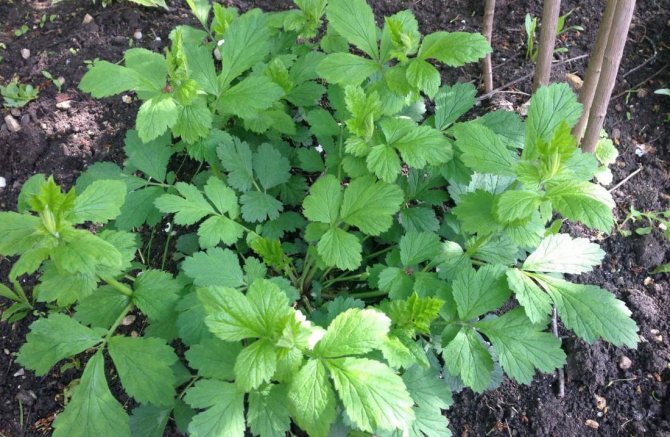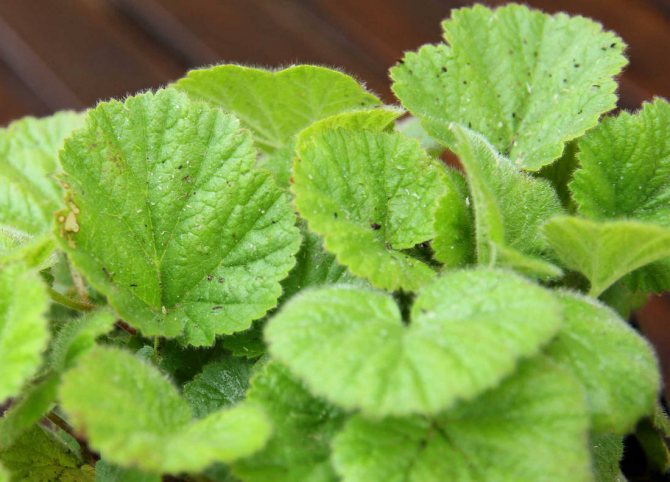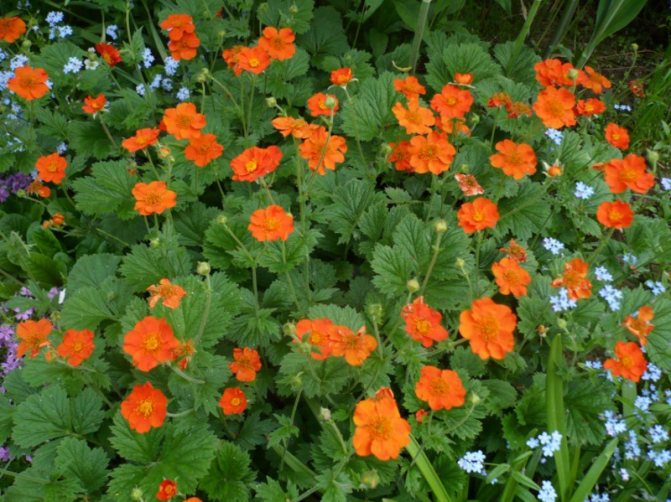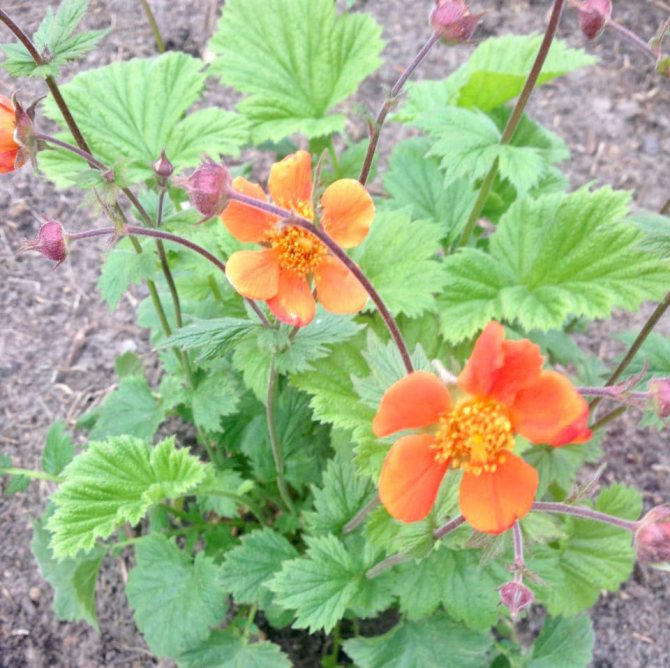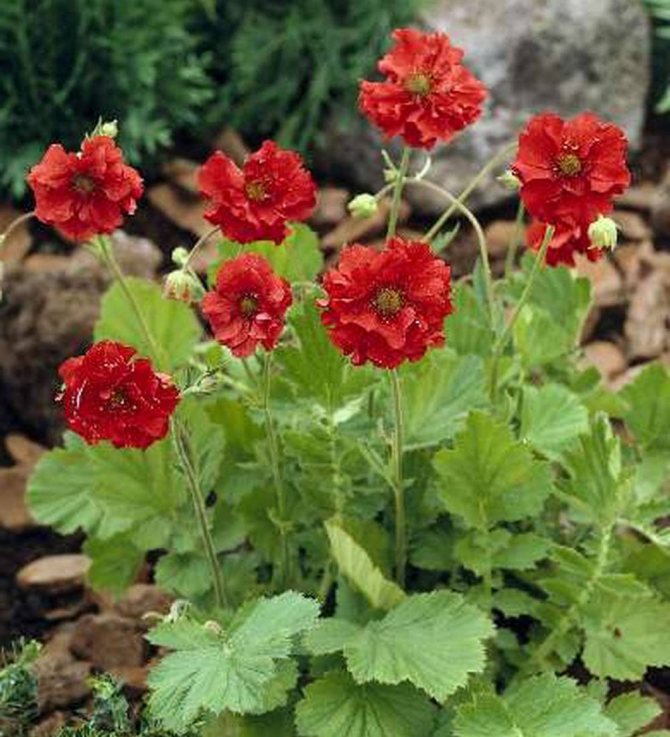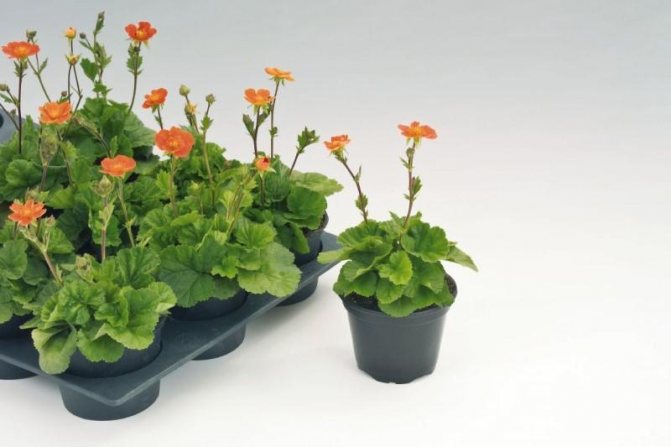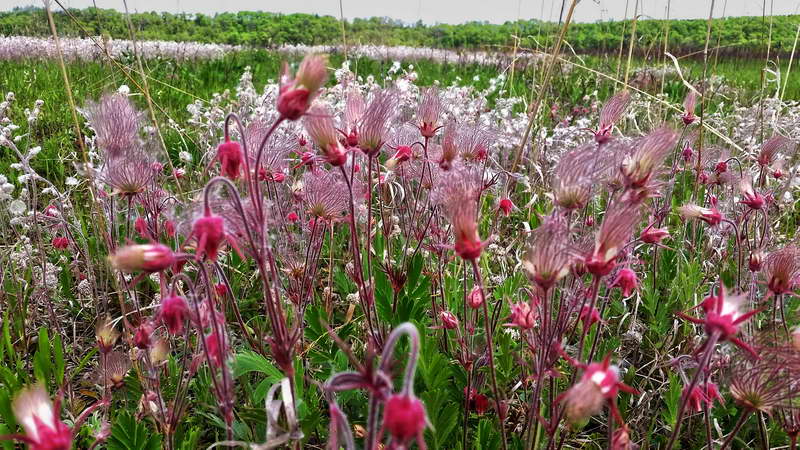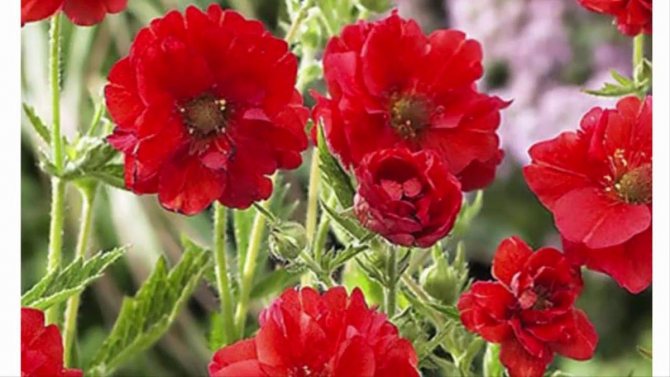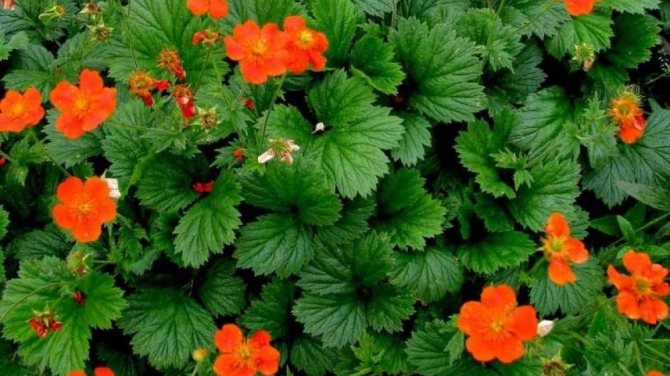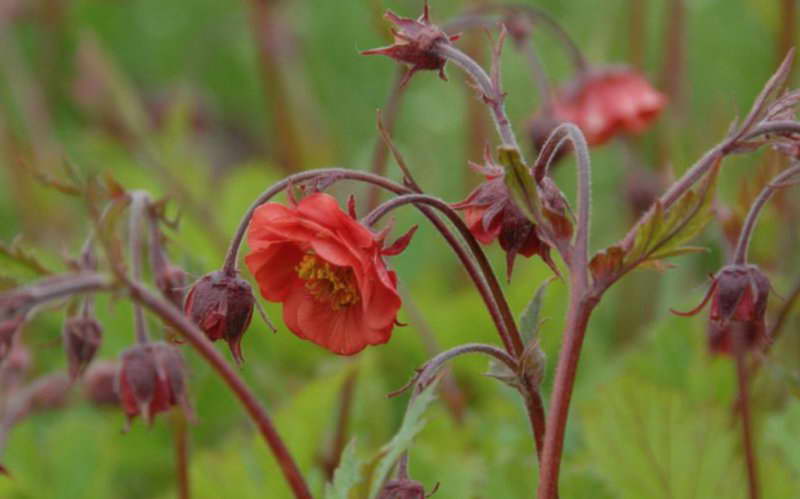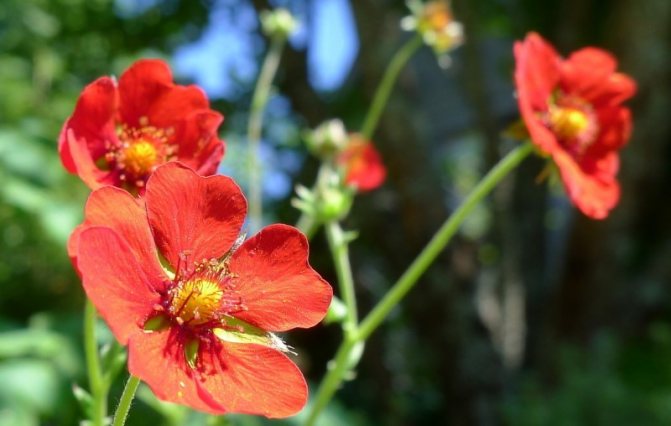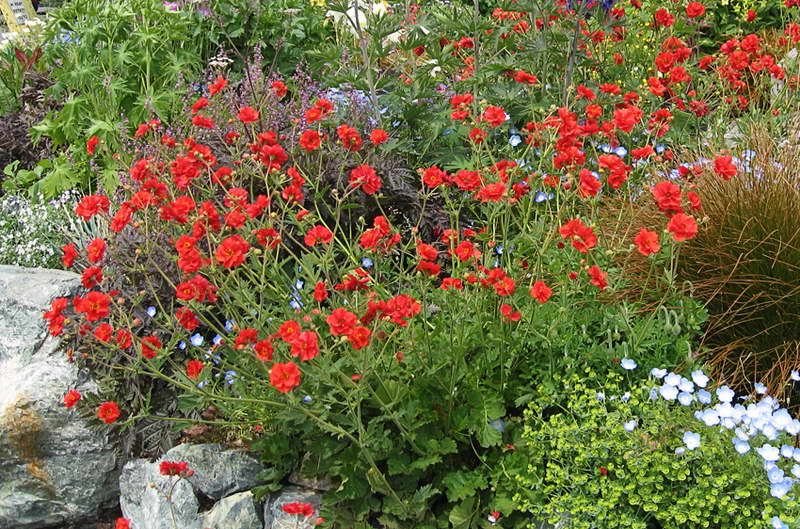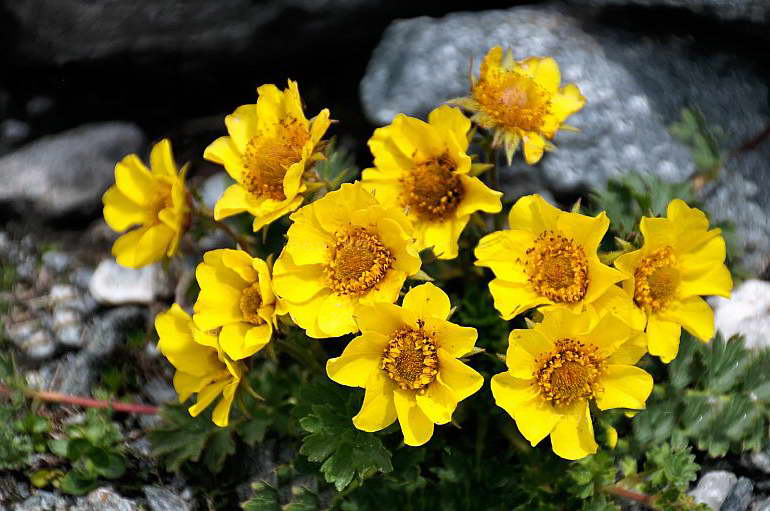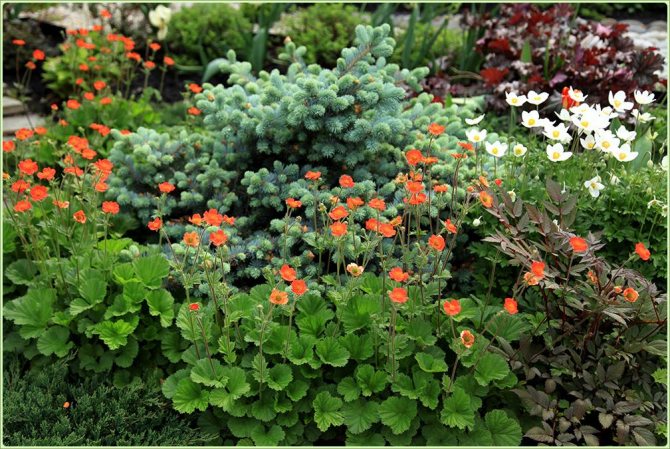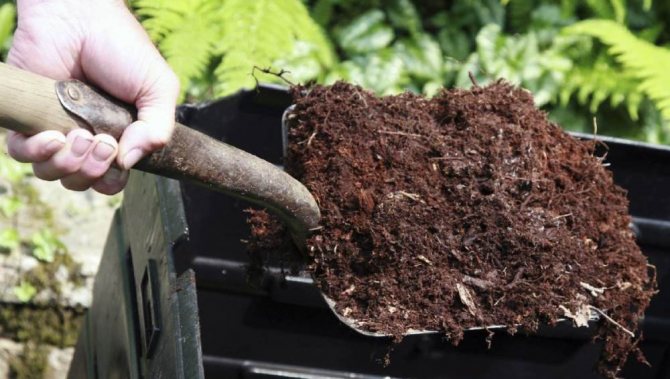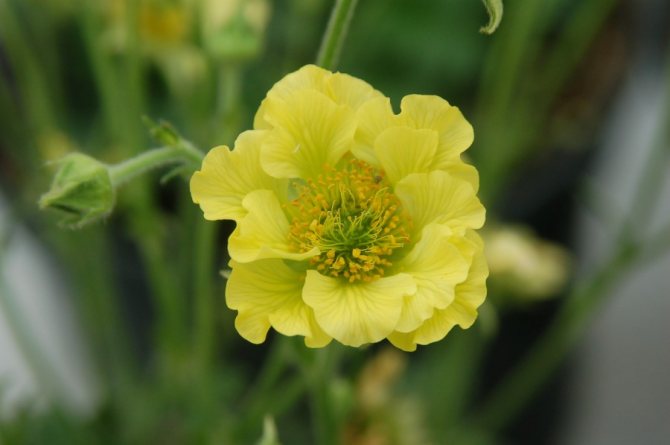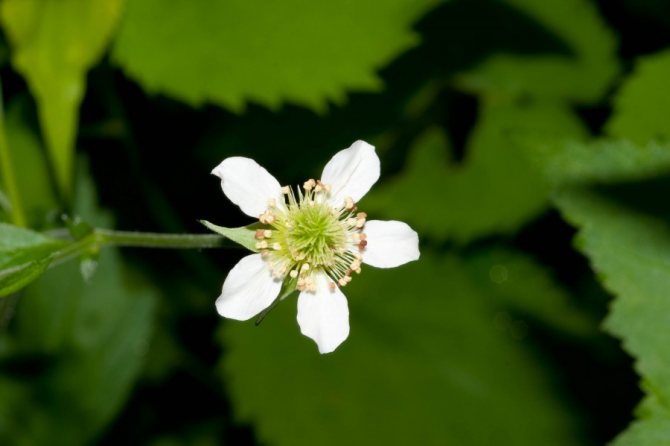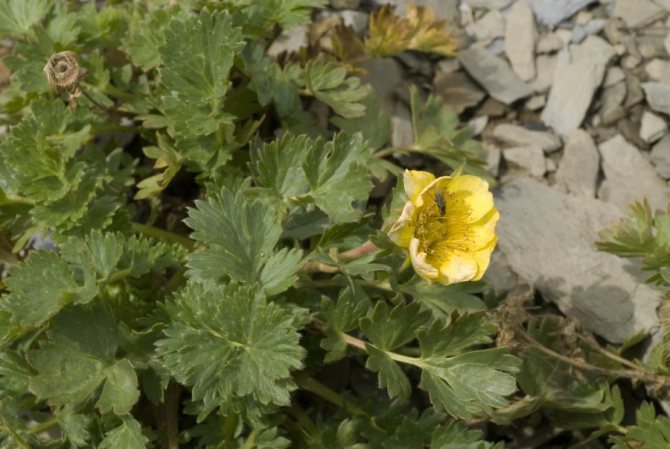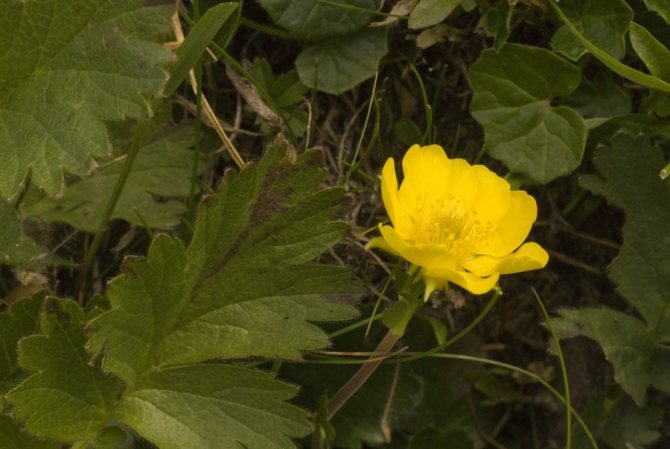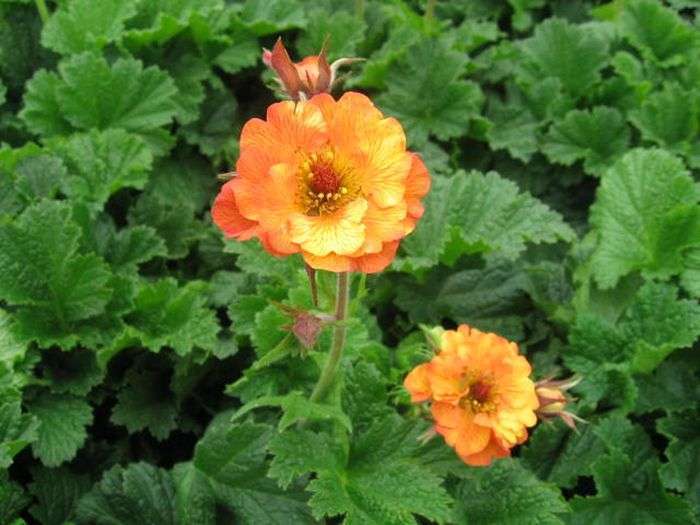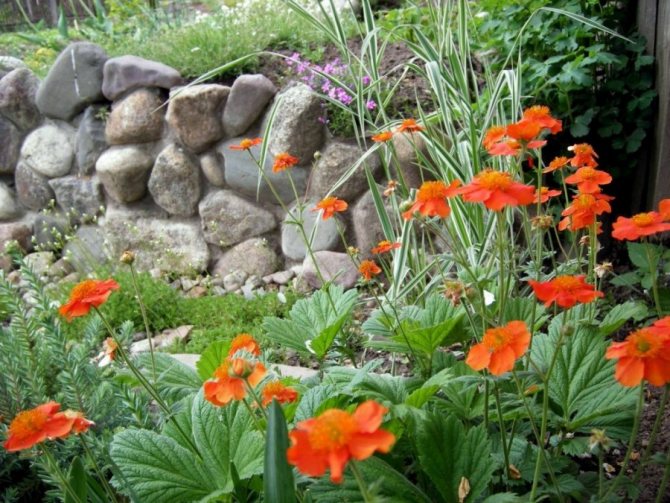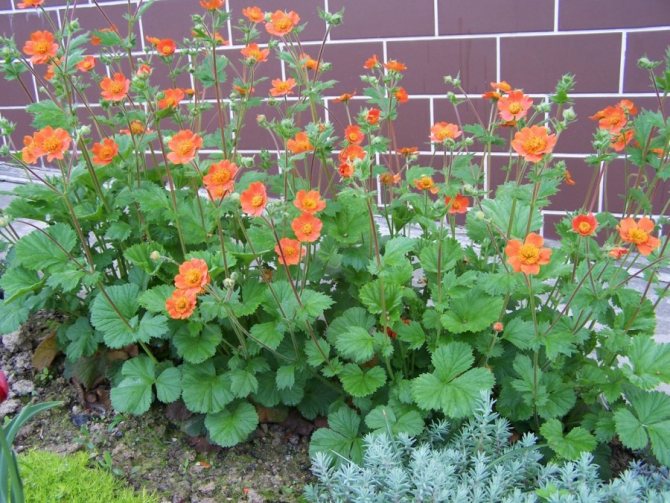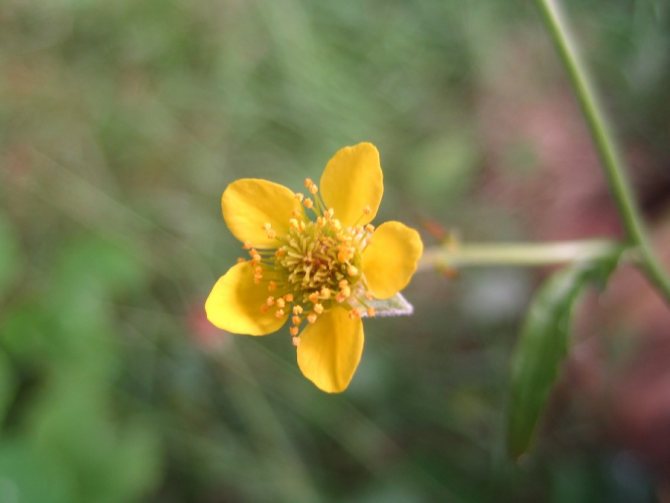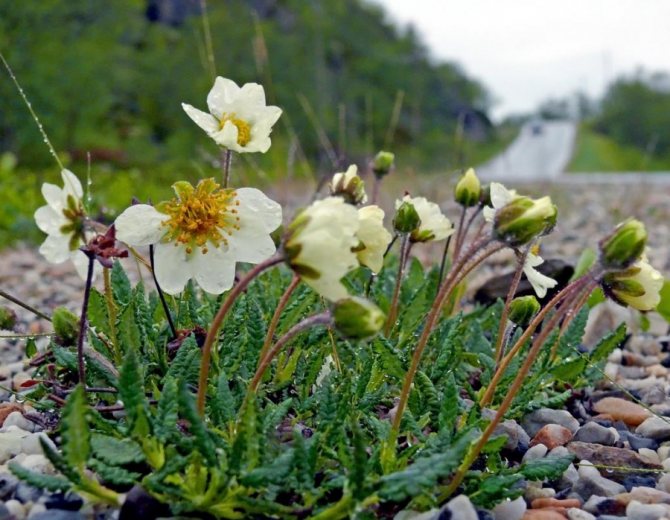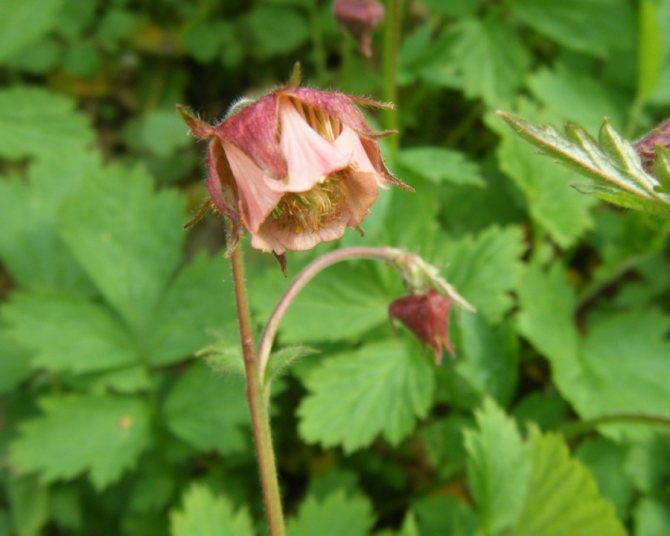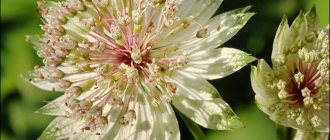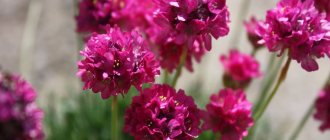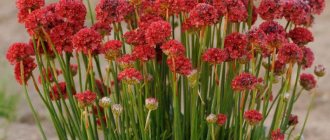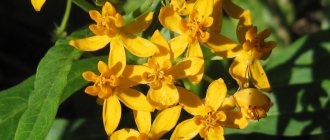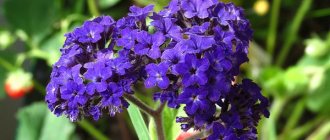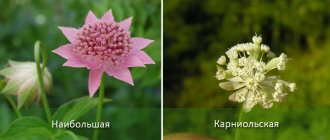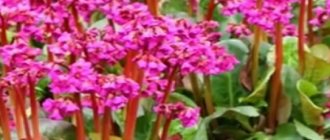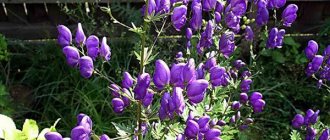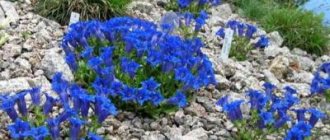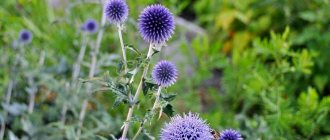When decorating a summer cottage and an adjoining space, many gardeners prefer decorative flowers. Gravilat is a great solution for any garden. Among herbaceous plants for open ground, this perennial occupies a special place. It is beautiful and blooms almost all summer, which gives it priority when planting in flower beds and alpine slides. And having correctly formed a flower bed of several polar varieties, you can get a blooming area throughout the summer and part of autumn.
Gravilat terry reddragon: growing from seeds
The bright red inflorescences of "reddragon" from a distance can be confused with poppies. This flower is quite unpretentious and can grow both in an open, illuminated area and in partial shade.
Seeds are sown in early spring. First, let's prepare the soil - gravilat needs a well-drained soil, for this you need to add a little sand or wood ash to the garden soil. The gravilat tolerates picking well, it has a strong tap root system, so it is not necessary to leave too much distance between the seeds. The seeds are lightly pressed into the ground and sprinkled on top. The seedling box is covered with glass or plastic and left in the light.
After the seedlings have formed 2-3 true leaves, you can make the first pick - the root system by this time has already been sufficiently formed. Seedlings are transplanted into open ground in late May - early June, when the threat of frost has passed.
The soil in the place of permanent "residence" of the "Reddragon" gravilat can be any, the main thing is that it should be well moistened. Therefore, take care of regular watering of the plant, especially on hot days.
Terry gravilat "reddragon" is a perennial plant, for the winter it must be covered with spruce branches or dry leaves. To keep the plant blooming all summer long, cut off the dried flowers in time.
Combination with other plants
From the root rosette of leaves, the gravilat flower produces flowers of red, yellow and orange hues on hard stems in mid-summer. The plant is evergreen except in places where the temperature drops below -18 ° C. A description of the culture in terms of botanical features is presented below: The flower has a creeping, blackish and slightly woody root that grows deep in the ground along with numerous fibers.
Stems are straight and reach two meters in height (often at the top they are slightly paniculate). Near the roots, the leaves are almost lyre-shaped. On the petioles, they are already rounded with jagged edges. Leafy stems are few in number and only 3 mm long. The seeds are oval with a slightly hooked end. The flowers give the whole plant a light and airy feeling
When organizing the care of the gravilat, you need to be prepared for the fact that the culture is distinguished by increased requirements for the conditions of its habitat. Depending on the type, gravilat can be frost-resistant. They are also distinguished by their need for light: some of them love full sun, while others prefer a little shade. Some grow easily in dry conditions, but most require additional moisture.
During winter storage, there is a risk that the gravilat will start to rot, especially if the soil or storage area is very humid.It adapts easily to any soil, but prefers neutral to slightly acidic. here everything is simple and complicated at the same time, since you need to create a neutral reaction of the soil with an appropriate watering regime. During flowering, it can fall off and bloom again several times over the summer. It is susceptible to the influence of some pests and diseases that can harm the gravilat.
Planting a gravilat when grown from seeds should be carried out by a seedling method at home. This allows for early and long-lasting flowering. In large flower gardens, grown in the front rows - as a border for shrubs - their low foliage and bright flowers on yellow stems are ideal for framing any flower garden. Gravilat triflorum is used as a natural primer.
It is recommended to plant a flower only on loose and drained soil, in which 2/3 should be sand. Then it is mixed with soil and gravilat seeds are grown in this soil. You can also add ash, but it will take much less than sand. Since the plant is very fond of sun and light, then the place for planting gravilat should be appropriate - light partial shade or open sun.
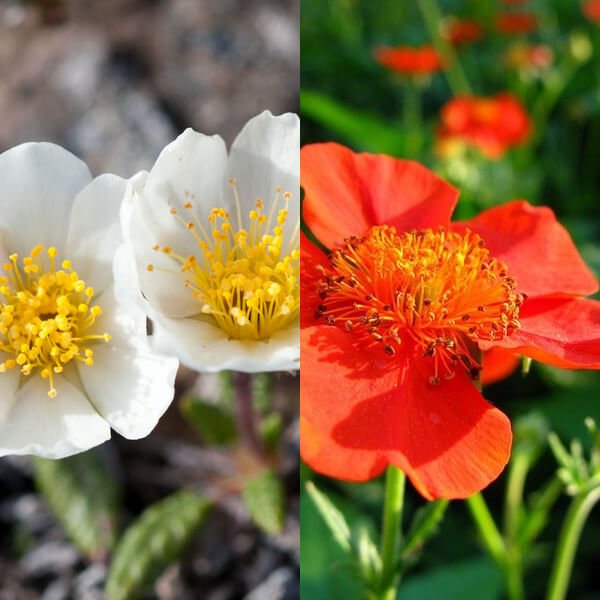
If you cut off the ground part of the flower before wintering, and then cover it with foliage or a layer of mulch, then the gravilat will perfectly survive all frosts. The flower (with the exception of the river variety) does not like it when a large amount of moisture accumulates near the roots - because of this, rotting can begin. That is why high-quality drainage is important, which, with careful watering, will not allow water to stagnate near the root system.
It also happens that the water continues to stagnate in spite of everything - in this case, next year it is recommended to raise the level of the soil by adding sand to it. In order to preserve the picturesque flowers of the gravilat as long as possible, we advise you not to forget to remove dry and damaged petals in time. Also, do not forget about feeding - at least three or four times per season will be enough.
When planting, do not forget to maintain a distance of 20 centimeters between seedlings. Gravilat is grown from seeds or simply divided by a bush with a sharp knife - in this case, you will receive the first flowers next year. When growing seedlings from seeds, only after a year. Reproduction of gravilat by dividing the bush is possible only if all the seeds on it are finally ripe.
Where does the design of flower beds begin? Of course, with the choice of plants suitable in color and overall dimensions. The following are the main varieties of gravilat with a photo, many of them are more decorative. When choosing a suitable species, you need to pay attention to the botanical features and requirements for growing conditions.
Gravilat Urban is also known as the Avens tree, Bennett's grass and St. Benedict's grass. This herbaceous perennial grows in shady areas such as forest edges and hedges in Europe and the Middle East, and is typically 60 centimeters tall and blooms from May to August. Flowers 1-2 mm in diameter with five bright yellow petals.
Hermaphrodite flowers are fragrant and pollinated by bees. The fruits have barbs, which are necessary so that they can be caught on the backs and fur of the rabbit and other animals. The root of the plant is used as a spice in soups and to enhance the flavor of ale, and Gravilat Urban is said to cure poison and dog bites. It has also been suggested by some scientists as a remedy for colds, liver disease and indigestion.
Chilean gravilat
Chilean gravilat is also called the Greek rose. It grows in the central region of Chile. Used in traditional medicine by the Mapuche Indians in Chile to treat various ailments. The plant has bright red petals that will adorn any garden.
Handcrafted gravilat grows in most of Europe, with the exception of the Mediterranean region, as well as in parts of Central Asia and North America (known there as purple avens). Grows in swamps and damp meadows, producing red flowers from May to September. This variety grows calmly in moist soils and withstands slightly acidic and calcareous soils when exposed to sun or partial shade.
Gravilat red grows up to half a meter in length and differs from other varieties in rich red or fiery orange flowers with a diameter of 3 centimeters. The most popular species are those with double petals. The fireball has a length of 60 centimeters and flowers with a diameter of 4 mm. To obtain seedlings, seeds are sown in March-April. And after the appearance of the first leaves, they are divided into different containers.
This is an outwardly very attractive plant (the terry variety is especially beautiful), which is most often used for medicinal purposes. Gravilat "Red Dragon" is quite unpretentious, so it will not require special conditions from you - the main thing is not to forget about good drainage and a place in a sunny or slightly shaded place. Like other species, it propagates by seeds or vegetatively.
A member of the Rosaceae family has flowers that look very similar to roses or rose hips. Plant height reaches 70 cm. The leaves are light green, green, sometimes dark green, large at the root and small at the inflorescences. The leaves of the flower are resistant to frost and cold, they can retain their green appearance even under snow if the temperature does not drop below 18 ° C. The color depends on the type and variety: white, red, yellow, pink, orange, coral, etc. Stems are green with a burgundy coating, branched.
The perianth is claret or brown. The inflorescences are collected in umbrellas or panicles, which have from three to seven buds. There are varieties whose flowers resemble a bell. The seed is in a nut-shaped capsule and has an oblong shape.
There are more than 45-50 species and varieties, but not all of them are cultivated and grown for decorative purposes.
There are two main methods of propagation and cultivation of a plant - with the help of seeds and by dividing the root.
Growing gravilat from seeds. The ripened seeds of the plant are gray in color, oblong in shape and a pointed end. The surface is slightly bristly.
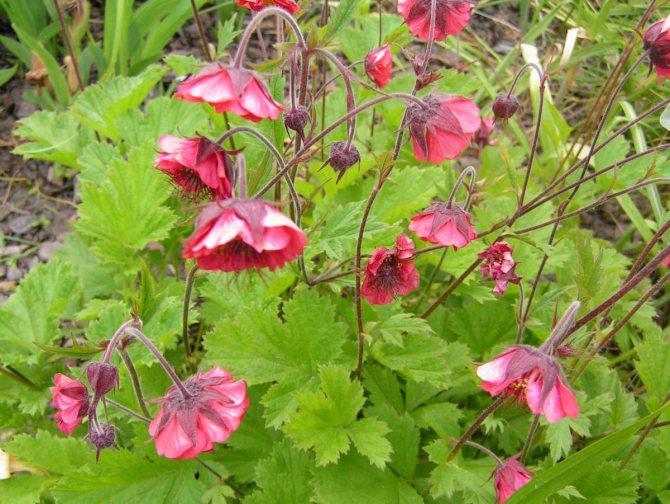

Chilean gravilat - growing from seeds, the same for an ordinary flower and happens in the same way with other varieties.
Sowing seeds for seedlings is carried out in February-March so that the seedlings have time to strengthen and grow up by the time they are planted in open ground. The seed is sown in prepared moistened soil, lightly sprinkled with earth, and watered. Before the seedlings germinate, the container is covered with foil or glass, left in a warm, sunny room, but not in direct sunlight. Daily care consists in removing condensation and airing the seedlings for 5 minutes. This is done to prevent the appearance of fungal and mold growth.
When the first green shoots appear, the film cover is removed and the care of new shoots is continued, daily spraying with settled water. Further, the seedlings are dived into separate pots, and with the arrival of heat, they are planted in open ground in a permanent place.
Cultivation from seeds is also carried out in a different way, sowing seeds directly into prepared, fertilized soil. When grown from seeds, a young perennial will begin to bloom in the second year.
Growing gravilat by dividing the root system. The plant has a strong rhizome and quickly takes root in a new place. The division is carried out in early autumn or early spring. In this case, the roots of the plant are dug, cleaned of an earthen coma and, using a knife or hands, carefully divide the roots into 2-3 parts. Each division must have at least two living buds.Reproduction in this way is more efficient and flowering will occur in the same year - in summer.
Soil and site selection
Gravilat is an unpretentious plant and grows well on any drained soils, with the exception of slightly acidic and acidic ones. Under natural conditions, the flower is more often found in meadows and fields, so it needs an open sunny space, but it will also endure planting in partial shade without problems.
| ALL ARTICLES »GARDENING» Flowers |
| Gravilat belongs to the Rosaceae family, which can be clearly seen in the form of its inflorescences. They are large, spherical, in most varieties - terry. Virtually no aroma, bloom from late spring to mid-summer. Then they can go to the 2nd phase, flowering closer to autumn. Certain varieties bloom all summer without interruption. The height of the stems in most of its species reaches 70 cm, although there are also dwarf specimens - not higher than 15 cm. The stem is erect, the leaves are concentrated in the lower part, have a dark green color and a wrinkled surface. Even after the buds wither, the foliage adorns the garden with its appearance. Gravilat is a perennial plant, and also resistant to cold, it is actively grown in the middle lane. Today in Russia, you can count up to 20 of its species. In nature, there are about 50. Taking into account the variety of bush shape, inflorescence size, soil requirements and other factors, gravilat easily fits into absolutely any garden pattern: it is planted in rock gardens, near water bodies, on rocky hills. Which species and variety to choose depends on the place where it is planned to be planted. Gravilat does not require special conditions for its cultivation. For almost every soil, you can choose the kind that will easily take root on it. It is not difficult to grow it from seeds, and it is capable of blooming not only among the same Rosaceae, but also in the company of other flowers. For example, carnations and bells. However, a few gravilata bushes look more advantageous than their scatter among other plants. |
Gravilat fireball: growing from seeds
This gravilata variety is used not only to decorate flower beds, flower beds, verandas and rock gardens, but also grown for cutting - its leaves remain green for a long time, which gives the flower a fresh look.
"Fireball" refers to gravilata varieties that can be sown not only on seedlings, but also directly into open ground. Sowing for seedlings is carried out in March-April, in open ground - not earlier than May (so that the seeds do not freeze) and not later than July (otherwise the plant will not have time to get strong enough for wintering).
Before planting in a permanent place, it is necessary to add compost or mineral fertilizer to the soil. Gravilat needs regular watering, it is also very important to weed and loosen the soil.
In order for the "fireball" to bloom all summer, you need to cut it off immediately after the first bloom. Every 3-4 years, the bushes must be divided, since the gravilat grows strongly.
Reproduction of gravilat
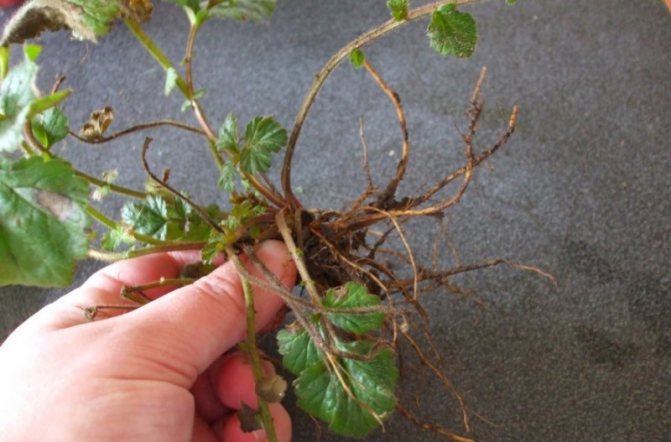

Anyone, even a novice gardener, is easily able to propagate gravilat on his site. The plant is easy to transplant and grow from seed. In total, there are 2 ways to propagate a herbaceous flower:
- seeds;
- dividing the bushes.
It is better to divide the bushes for reproduction in early spring, planting the cut off parts directly into the open ground. The incision must be made with a sharp knife so as not to cause additional trouble for the flower to restore the root system.
You can divide the bush in early autumn. However, experts recommend that this operation be carried out only in the southern regions of our country, where the gravilat will have time to gain a foothold in the ground before the first frost. Before planting, the soil must be thoroughly dug up and well shed with water.
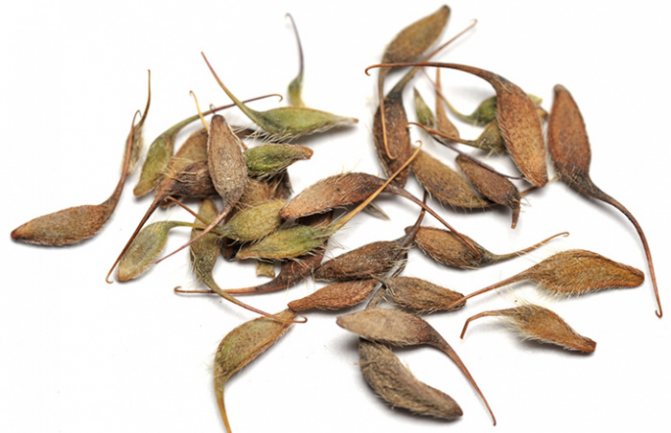

It is also not difficult to propagate a plant by seeds. For this, in early spring, the raw materials collected from the fall are planted in special containers or in a greenhouse.Later, when they take root and give the first shoots, they can be transplanted into the ground on the site. In terms of timing, seedlings are planted in open ground around mid-April. If at this time the weather is still unstable, there are frosts, then it is better to use a covering film, agrofibre or simply cut plastic bottles with which the planted sprouts are covered. So they will survive without loss and take root in a new place.
It is allowed to plant sprouts that have sprouted from seeds in the ground in the fall. Temperature indicators are considered the main condition. It is not recommended to plant seedlings before the onset of prolonged warming. In this case, the seeds can actively start growing this fall, and quickly freeze with the onset of severe frosts.
Chilean gravilat: growing from seeds
Chilean gravilat is a fairly tall plant, reaching 60 cm. Like the "fireball", it can be sown in open ground or grown seedlings. Sowing dates are the same as for the "fireball".
Before planting a seedling in a permanent place, you need to add sand or wood ash to the soil, then the plant will better tolerate drought. It is important to leave a distance of 40 cm between seedlings. Chilean gravilat loves water very much, if you water it regularly, it will delight you with large flowers from June to September.
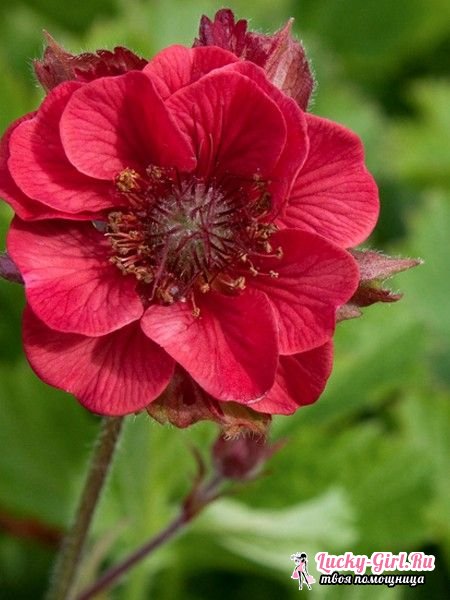

Whatever grade of gravilat you choose, it will definitely become a decoration of your site for many years. As you can see, this plant is quite undemanding to grow, the main thing is to provide it with regular watering.
Gravilat is a Chilean perennial plant that belongs to the Rosaceae family. There are about 50 varieties in nature, but only about 20 species are planted. In its natural environment, the plant prefers to grow on the banks of water bodies or on the forest edge. The population called this plant Benedictine grass, comb.
Gravilat is about 70 cm high. The leaves are like feathers, wrinkled and unsightly in appearance. The shade is dark green. Leaves grow from the root and stem. Leaves growing from the root system are larger than those growing from the stem. The inflorescences have a pale yellow tint. After ripening, fruits appear in the form of pubescent nuts on the outside. Flowering occurs in the summer.
Compatibility with other horticultural crops


In a flower garden on a private plot, gravilat successfully emphasizes the beauty and individuality of the exhibition. Usually it is planted with such plants as phlox, bells. They are of medium size and do not overlap, revealing the whole feature of landscape design and the beauty of the area.
The flower also looks good with tall lupins, irises, goldenrod, peonies, cereals, nemophilka and other decorative crops. Original compositions of herbaceous plants in the open field include large and small stones, as well as undersized decorative flowers, such as periwinkle or bidense, are used as a frame. Different varieties of gravilata can be used to form a so-called "slide" from the smallest to medium-sized plants.
As an independent plant for a flower bed, gravilat also looks great. You can plant several varieties that will differ in color or even height, forming a complex-shaped hill or a special flower bed. By choosing varieties that differ in the beginning of flowering, you can get a flower bed that will stand out with bright flowers throughout the season, from early spring to mid-autumn. In this case, the flowers will fade gradually, without interfering with the rest of the plantings.
Varieties and types
The homeland of this species is South America. The height of this species is about 60 cm. The leaves of the plant are collected in a rosette from the root system. The inflorescences of the gravilat Mai Tai have a red tint. Flowering occurs in mid-summer and takes a month and a half.
This species is called "clove root".This species grows throughout the territory of both Ukraine and Russia. The shoots of this species are straight, the root system is creeping and large in size. The plant is unpretentious and gets along in any conditions.
Distributed almost throughout Europe. The natural habitat is marshlands and meadows. Red inflorescences indulge in flowering all summer.
The height of this species is 60 cm. Flowering begins in spring and continues until autumn. The shade of the inflorescences is bright scarlet or rich orange. The diameter of the flower is about 3 centimeters. The most popular are the species that have double flowers.
It has shoots reaching a length of 60 cm. A perennial species that pleases with double inflorescences with a bright yellow and scarlet shade. Flowering lasts all summer.
It is a herbaceous plant that grows up to 60 cm high. The leaves from the root are collected in a bunch. The inflorescences have a rich yellow tint. Terry flowers, about 4 cm in diameter.
an interesting variety, its height fluctuates within 60 cm. The flowering is saturated with bright sunny double inflorescences.
A plant with straight shoots with foliage collected in a bunch in a basal rosette and bright and neat peduncles. Terry inflorescences about 4 cm in diameter.
Also, the plant is also called the scarlet flower because of its miniature and attractive inflorescences.
Biological description
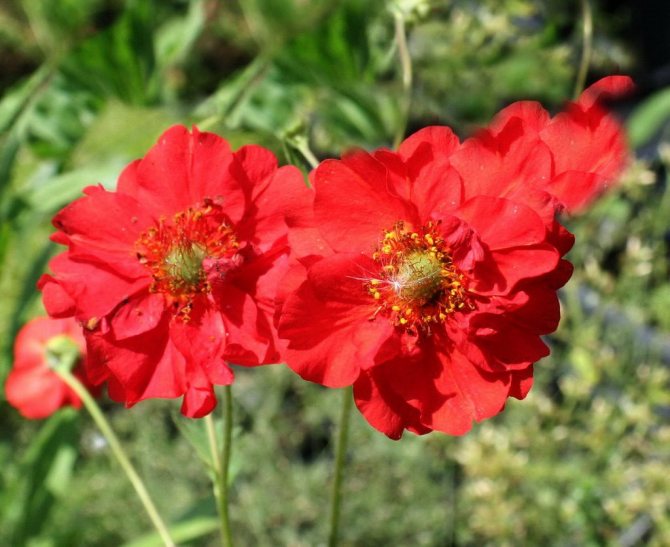

Perennial, herbaceous plant gravilat, grows in length up to 60 cm, belongs to the Pink family. Differs in a thick, creeping and not branched rhizome, from which leaves grow like a rosette. Erect, thin stem, covered with small leaves and has a light edge at the top. Large leaves grow on long cuttings near the rhizome. They have serrated edges. The stem does not have a pronounced leaf cover, there are only small, unexpressed leaves. They are also covered with hairs on both sides.
Gravilata flowers are small, only 3 - 4 cm in diameter. They have two rows of petals, 5 pieces each. The petals can be double or completely smooth to the touch. The arrangement of the petals in the form of a bell is possible. Often flowers are collected in inflorescences of 3-4 pieces, have the shape of a panicle or umbrella.
The colors that the petals can be painted with are as follows:
- white;
- red;
- yellow;
- orange and others.
The duration of flowering directly depends on the type of plant. There are two options - either from May to July, and then from August to October, or the entire summer season without a break. Both options are great for creating landscaping on the site. Having compiled several varieties at once, the gardener will receive an endlessly blooming flower bed, pleasing to the eye until the very month of October.
By the end of the flowering period, the plant bears fruit, from which you can subsequently grow a herbaceous plant yourself. In the wild, the fruits ripen in September and, clinging to animal hair, as well as human clothing, spread to new territories. It is noteworthy that gravilat is very frost-resistant.
At home, you need to plant seeds yourself or dividing a bush in order to propagate the flower you like. This should be done carefully and within the time frame recommended by agronomists. This is the only way to get a strong, well-equipped plant that can reproduce a large number of inflorescences.
Gravilat has a rich chemical composition. Due to the high content of essential oils and tannins in the plant, it is used in folk medicine. Some gardeners grow this flower to use parts of it in their cooking. It has a very pleasant taste and adds an original flavor to the dishes.
Gravilat Chilean planting and care in the open field
The plant prefers abundant lighting, it is better to plant in more illuminated areas.
Plant care is reduced to removing dry leaves and branches, as well as pruning dry buds and old branches to prolong flowering and ensure the emergence of new shoots.
Watering the plant needs constant and complete, but without waterlogging. Stagnant moisture and waterlogging of the soil is well tolerated only by river gravity. Does not tolerate prolonged drought.
The plant prefers non-oxidized soils. The composition of the soil for planting a plant should include wood ash, combined with coarse sand and deciduous soil. If the soil for planting is waterlogged or waterlogged, then you should add a little earth and raise the flower bed.
Soil preparation
Before planting any of the species of this perennial flower, you need to prepare the soil in the area intended for it. Gravilat, which is easy to plant and maintain, prefers well-fertilized, loose, moisture and breathable neutral or alkaline soil. To deoxidize the earth, you can add wood ash or bone, dolomite flour when digging. Most of the ornamental gravilata, with the exception of the river, prefer moist, but not damp areas.
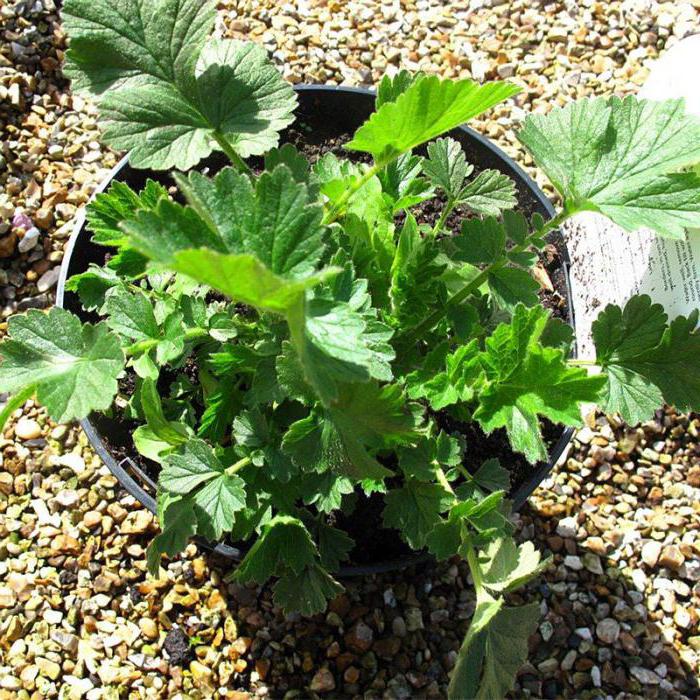

Transplant and fertilization
The plant must be repotted and the bush must be divided every four years. This will promote active flowering and better plant growth. It is necessary to divide an adult bush so that the delenka has its own full-fledged root and a small rosette of leaves. The transplant must be carried out in fertilized soil and provide full care.
The transplant should be done either in the spring or in the fall after flowering.
The plant must be fed only with mineral fertilizers with the addition of nitrogen, phosphorus and potassium. Apply the fertilizer several times a season.
Tame Gravilat
Homeland - the Caucasus, the European part of Russia, Eastern Siberia, Western Siberia, Asia Minor.
Perennial 70 cm in height, with a thick rhizome. The stems of the gravilata are straight, reddish-brown. The plant blooms in May. Pink-cream petals and stamens with pistils slightly peep out of the red calyx. After flowering of tame gravilata, only one pistil remains, spreading out on a straight stem. The foliage is basal, feathery, with a large rounded lobe.
Tame gravilat reproduces only by seeds. The flowers are very rich in nectar and are well pollinated by insects; self-pollination is very rare.
The fruits of this gravilat ripen in July, they have a hooked long nose, covered with thick hairs, easily attach to the fur of animals, in this way they spread over long distances. Under natural conditions, seeds are able to germinate in the year of ripening, but mass germination is observed the next year in the spring.
In the first growing season, a rosette of rounded foliage is formed. Young gravilata plants overwinter with a green rosette, and then the overwintered foliage dies off and a rosette of large leaves forms.
By autumn, the lyre-like foliage that has unfolded in the spring dies off, new foliage appears with a simple plate, wintering under the snow cover.
"Album" - white flowers,
"Lionel Sokh" - yellow flowers.
Diseases and pests
- Roots can rot when the soil is waterlogged.
- With a lack of moisture, spider mites can infect; for this, they should be treated with insecticides and ensure thorough watering in the future.
- It must be borne in mind that the plant is afraid of frost, therefore it is better to provide shelter in winter with leaves or spruce branches.
Perennial gravilat
- herbaceous plant of the Rosaceae family. In natural conditions, there are about 50 species growing in forests, meadows, along the banks of rivers and lakes. There are twelve types of gravilat known on the territory of Russia. About 20 species are grown as a cultivated plant. Gravilat is used both for creating compositions and for decorating rock gardens, ridges, lawns, and reservoirs.
Avens
- a rhizome plant, rather unpretentious, frost-resistant, blooms for a long time - from May to July, and then again again closer to autumn. Although there are gravilata varieties that can bloom all season with double or simple flowers.
The plant has erect stems from 15 to 70 cm high. The leaves are wrinkled, rich bright green color. Popular border varieties of gravilata form dense basal rosettes of leaves, over which thin rigid peduncles with cup-shaped bright flowers grow at the beginning of summer. Flowers, reaching a diameter of 3.5 cm, have a wide variety of shades of yellow, red, orange. Flowers grow on the tops of the stems, collected in paniculate or corymbose inflorescences. The fruit of the gravilat is shaped like a nut.
Best suited for rock gardens and rocky slides Mountain gravilat
(Geum montanum), reaching a height of 15 cm and blooming with yellow flowers. This is a more unpretentious plant in comparison with the same Gravilatus creeping (Geum reptans). As a curb plant, Chilean Gravilat (Geum chiloense) is often grown 30 - 70 cm tall; it blooms from May to September. And for swampy soils, River Gravilat (Geum rivale), up to 45 cm high, is suitable. It blooms with light pink drooping bell-shaped flowers from May to October.
For planting perennial gravilata, a well-lit place or light partial shade is best suited. Any well-drained soil will do. But gravilat tolerates acidified and waterlogged soils worse. Before planting a plant, sand or wood ash should be added to the ground.
During the winter months, the gravilat, especially its hybrid forms, needs shelter. They cover it with spruce branches or dry foliage.
A perennial needs abundant, regular watering, but it must be borne in mind that the gravilat does not tolerate strong waterlogging and stagnant water. If there is increased swampiness on the site, then it will be better to raise the flower bed on which the gravilat will grow, with the exception of planting the river gravilat.
The plant is little susceptible to diseases and various pests. Needs to remove dried flowers. During the growing season, it is necessary to fertilize twice with mineral fertilizers.
Reproduction of gravilat
perennial is carried out in the spring by seeds or by dividing the bushes in the fall, or in the spring months.
Seeds are sown in early spring. Ready seedlings are planted in open ground after the onset of heat, from the end of April. For sowing, boxes located in greenhouses are used. The crops are covered with glass from above. The first pick is necessarily carried out in the greenhouse, and not in the open field. Gravilat, grown by seedlings, will bloom for the next season. In the south, sowing in open ground can be carried out in the fall, but it is not recommended to delay too much with this process, since the plant must have time to root well. Before planting, it is necessary to fertilize the ground with peat or compost.
If reproduction is carried out by dividing the mother bushes, then in the autumn months this can be done only after the plant has matured seeds. Divided bushes are planted at a distance of 20 cm.
Welcome friends on the site advice to gardeners. The perennial herb gravilat Chilean (Geum Chiloense) is a modest and unpretentious of graceful rosaceous inhabitants of flower beds, rabatok, alpine slides, shores of garden ponds.
Botanical characteristic
River gravilat (tame) is a perennial herb belonging to the genus Geum (Gravilat) of the Rosaceae family (Rosaceae). It is hygrophilous and grows well along the shores of various reservoirs. On a creeping, thick rhizome, an erect, weakly branched, beet-red stem grows up to one meter high.Compound-pinnate leaves growing in the root zone have long cuttings with several lateral leaves. The trifoliate leaves located on the stem are short-petiolate and decorated with small ovoid stipules.
At the top of the stem in late spring - early summer, 2 to 5 elongated pedicels grow. It is on them that small bisexual flowers resembling bells are located - up to 1.5 cm in diameter. The tame gravilat, the photo of which is presented below, clearly demonstrates this: a plant with modest wide petals, painted yellow or cream, with brownish-red veins. It blooms for a short time - only 20 days.
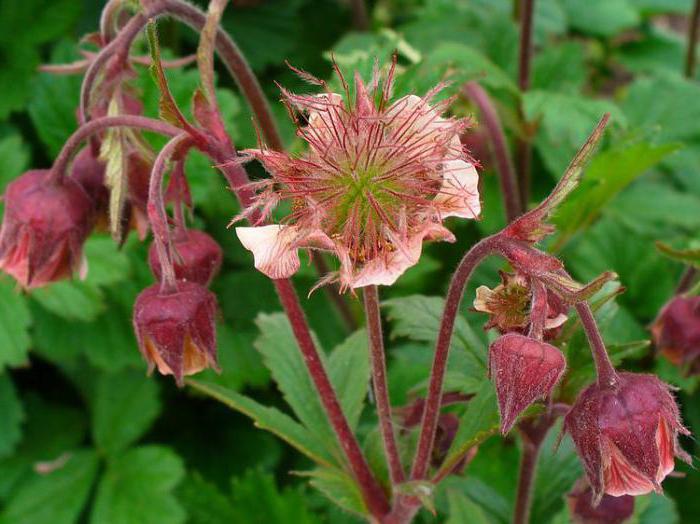

In July-August, the river gravilat forms fruits - achenes. They are painted in burgundy-red, and for better distribution they have a special device - a hook at the tip. Clinging to the wool of passing animals or clothing of people, the plant quickly fills the surrounding area.
A little about the flower gravilat
A plant with decorative juicy green straight stems up to 70 cm, decorated with patterned leaves with carved edges, collected by a basal rosette.
A flower-bearing stem with large orange, yellow and scarlet flowers rises above the spectacular green leaves.
From a distance, the gravilat can resemble the flowers of an oriental poppy, just as bright and noticeable. For undemanding agrotechnics and decorative features, gravilat is very much loved by gardeners.
Of the fifty natural species of perennial gravilata growing along the banks of rivers and lakes, in meadows, in forests, two dozen species are cultivated, cultivated taking into account the decorative properties expressed in the height of the stem, brightness, size and doubleness of flowers.
Gravilates grow well in open, sun-warmed places, but they tolerate glades with partial shade and drained soil, the plants are responsive to regular watering, and tolerate a short drought.
Every gardener, having got acquainted with gravilat, appreciating the decorative features and wisdom of growing this plant, over time sets himself the task of growing gravilat from seeds as an excellent way to get a certain look in his garden plot.
How many names does he have?
In science it is customary to call the river gravilatus in Latin - Geum rivale. But the Russian name of this plant is associated with another type of flower - urban gravilat, or rather with its fragrant rhizomes. Due to their very similar smell to clove, domestic pharmacists used them to give a more pleasant taste to the prepared medicines and drugs. And such roots were much cheaper than those brought from abroad. The pharmacists of that time called the dried roots for solidity in Latin - radix caryophyllatae, which means "clove root" in Russian. Over time, the name was shortened and became simpler - "caryophyllate", and later began to sound like "graphilata". As a result, such a name was assigned to this plant in the Russian botanical nomenclature.
The Russian people came up with many names for the river and city gravilates, emphasizing certain features of the flower. In various Russian regions, it is called a clove, a snake root, an ossuary, an undergrowth, a comb, a nutcracker, Benedictine herb and many other names.
Growing gravilat from seeds on your site
Gravilates grow well from seed seedlings. Experienced gardeners begin sowing at the end of March - April directly into boxes for growing seedlings, in a container with a highly nutritious soil substrate 2-2.5 cm deep, the soil is compacted, covered with translucent and light thermal film.
When sprouts appear, the film is slightly opened for a while a day, increasing the airing time of the plantings. For the first time, a transplant is carried out in a greenhouse.
When the third leaf appears, the sprout is ready for planting in the ground, fed with compost, peat and well warmed up.Gravilat can be sown with seeds simply in the ground from May to July.
Seedlings are planted on flower beds from May - June, when frosts pass. Plan of permanent planting of gravilat 40/40 cm.
The flowering period of gravilates grown from seedlings will come next year in the middle of summer. The decorative flower gravilat is an unusually beautiful sight.
Peduncle with a paniculate loose loose, rarely corymbose inflorescence, large bright cupped scarlet, orange or yellow flowers. They turn and reach for the sun's rays.
Terry species with flowers up to four centimeters in diameter, large anthers on the stamens, shiny and matte large corolla petals caress the eye for the entire rather long flowering season.
The flowering season for gravilates is quite long, from May to July. In warm August and September, new inflorescences and peduncles appear on the stems. If you choose the right several varieties of gravilates, they will delight the gardener with uninterrupted abundant flowering during the summer.
Immediately after the flowering of gravilates, the top of the stem is decorated with a nut-like fruit visible from afar.
Beautiful gravilates in group plantings in rabatkas, on flower beds, mixborders, surrounded by other perennials, such compositions will delight the whole family for more than one year.
The correct selection of perennial plants will allow you to decorate your summer cottage for several years without much annual effort. Around the gravilates, most often, similar care, carnations and bells are planted.
Gardeners take into account the responsiveness of gravilats to the presence of water, they recommend arranging garden ponds located on the site of streams or ponds.
Although in nature the perennial gravilat can have a stem height of up to 70 cm, but in landscape garden design, plants that do not exceed 20-30 cm are more often used.
Such plants are better combined with medium-tall perennials in flower beds, curb low-growing varieties of gravilata are common in garden plots. Their root rosettes of bright green leaves look no less impressive than flowers.
Geum chiloense
This is the name of the South American species - Chilean gravilat. The bush of this perennial in its normal state does not exceed 20 cm, and when it blooms, thanks to the peduncles it “grows” up to 60–70 cm. The blossoming flowers of this plant are red, orange or yellowish, collected in paniculate inflorescences. In garden culture, Chilean gravilat has been known since the first quarter of the 19th century. Over the years, breeders from different countries have created many different varieties of this species, differing in terms of flowering time. There are those that, having begun to bloom in May, finish the process only in September, as well as blooming for only 20-30 days in the middle of summer. Such a species as the Chilean gravilat, the photo of which you see below, depending on the variety, can bloom with both simple and double flowers.
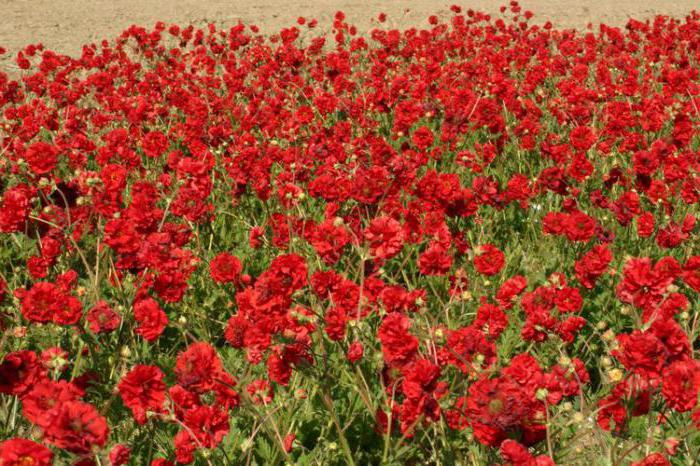

Reproduction methods of the gravilat flower, care features
In addition to planting with seeds, there are other ways, the reproduction of gravilat is practiced by vegetative division of a large mother bush. This manipulation is carried out in early spring with the beginning of the growing season or in the fall after flowering.
Cuttings take root well when planting plants 20 cm apart, fertilizing the soil, timely watering, do not require additional rooting measures.
This is due to the peculiarities of the type of perennial gravilat, consisting in the minimum requirements for growth conditions.
Although the plant's requirements for growing conditions are minimal, like any inhabitant of a well-kept garden, the gravilat is responsive to some agricultural techniques.
Caring for the gravilat, first of all, consists in preparing the soil, any soil is suitable for the plant, but it is necessary to ensure its good drainage. Waterlogging and acidification of the soil should not be allowed when planting gravilates; for this, sand and wood ash are introduced before planting.
With the provided drainage of the soil, gravilates require weekly, very generous watering.The gardener should be aware that gravilat does not tolerate stagnant groundwater and waterlogging.
If the groundwater is close, it is better to raise the flower bed or plant a river gravilat.
It is useful for the plant:
- Loosening the soil for aerating the roots.
- Removing weeds from flower plantings.
To continue flowering, experienced gardeners apply fertilizing with mineral fertilizers containing NPK complex.
The plant is not interesting to pests, gravilat is not exposed to diseases. When flowering, dry faded inflorescences and buds are removed from the bush. For the cold season, it is better to cover young plants.
Planting and agrotechnical techniques for caring for gravilat are very simple, the species diversity allows the gardener to choose the type and variety of plants, taking into account the characteristics of the area.
For stony soils, urban gravilat is suitable, it is better to plant mountain gravilat as a ground cover plant. As a curb ornamental plant, you should consider planting Chilean gravilata, which blooms throughout the summer.
Gravilat is a type of perennial flowering plant found on all continents, more often in temperate latitudes. The leaves are light green, less often dark green, the color of the petals depends on the type of plant, there are white, yellow, pink and red flowers. They are collected in inflorescences of 5-7 pieces, located "face" upwards, rarely - bell-shaped. The largest leaves are located closer to the root, the smallest - near the flower, under its calyx. The fruit is a collection of small brown nuts. Pollination occurs by insects, flowering begins in spring and ends in early summer
.
The title photo shows a vyskodekorativny modern garden variety of gravilata - "Blazing Sunset".
At home, gravilat is often used as an ornamental plant, for example, it is planted around the perimeter of the site. For planting, seeds or dividing the bushes into parts are often used, after which each piece from the stem takes root.
Views
All representatives of gravilates are herbaceous flowering perennials, wintering with leaves. Most representatives of the genus Geum bloom in late spring - early summer, but there are species that delight with their flowering before the onset of autumn cold weather. Petals are white, pink, yellowish-cream, various shades of red. There are both simple and double flowers.


Modern scientists have about 50 natural varieties, of which about seven can be found on the territory of the former Soviet Union. These are the following types of gravilat:
- tame (river);
- urban;
- Aleppo;
- fori;
- large-leaved.
In garden culture today you can find about 20 species, the most popular and common among which are the following gravilates:
- Chilean;
- bright red;
- hybrid.
Let's briefly talk about some types of gravilates.
Growing from seeds, varieties
Gravilat variety 'Mrs J. Bradshaw'
One of the most common planting methods is gravilat from seeds, which can be bought at any garden store.
Most often seeds grown by seedlings
... The seeds are placed in boxes or other containers with soil, and it must be compacted with special preparations. Small pits are created in the ground, 2-3 seeds are placed there, then they are covered with earth and a little water is added. After all the seeds have been laid, the box is covered with a non-dense translucent film, and it must transmit sunlight, which is necessary for the seeds for the process of photosynthesis and germination. Sowing usually starts
late March or early April
so that when the seeds have already grown, the frost will end.
When the first shoots appear, the film must be removed so that the soil is moistened and aired, and the plants receive more solar heat and light. You need to leave the box open for several days, you can do it for one day, after which the sprouts close again for several days.After that, the film is removed completely. When the sprout has 2 or 3 leaves, the plant is ready to be transplanted into the soil. Each type of gravilat has its own care rules when the plant is still at the germination stage.
There are more than 50 varieties of gravilat, but gardeners prefer these modern varieties:
- Gravilath Fireball.
This species is distinguished by large flowers, they can reach 3.5-4 cm in diameter. Usually the plant has one flower, red or burgundy, with a small distance between the petals. The cores are black, with protruding yellow pistils of 4-5 mm. The leaves are lilac-shaped, often toothed, but sometimes rounded. The petals remain green for a long time, and later acquire a reddish tint, often showing through in spots. The plant has a height of 50-60 cm. To get flowers, you need to plant seeds at the end of March, and after the sprouts and the first leaves appear on them, you need to plant the plants in different containers.Gravilath Fireball
- Terry Red Dragon (Red Dragon)
... This plant is especially attractive in appearance, it is considered one of the most beautiful types of gravilata. It has a red or white color, the core is black, terry to the touch, with a large number of green or yellow pistils. The flower is 3 cm in diameter, 40-50 cm in height. Seeds are planted in early April, since this type of plant grows very quickly. After the appearance of 3 leaves, the plant can be planted on the soil. When disembarking, the main thing is to choose a well-lit place so that the gravilat grows correctly and high.Gravilath Red Dragon
- Chilean.
This type of gravilat is more commonly used in medicine, but it can also be used in site design. The petals have a characteristic sharp yellow color, the core is almost invisible - it merges with the petals due to the light yellow color of the pistils. Plant height - 50-55 cm, flowers are small, often collected in inflorescences, 2-2.5 cm in diameter. Seeds are planted in March or April, 1 piece in each hole. After the green stems of the plant appear, the film is completely removed from the ground, after which it can be transplanted. The roots of the Chilean gravilat are voluminous, so plants need to be planted at a sufficient distance from each other - about 10-20 cm.Chilean gravilat
- Rigoletto
... It is often used to create flower beds, as it is the longest flowering type of gravilat. The petals are bright red, rounded, directed towards the sun, gathered in a bunch. The core has a distinct black color with a few yellow pistils. Height - 40-50 cm, flower diameter - 4 cm. Seating begins after the appearance of 3 leaves at the sprout. It is necessary to plant on well-spilled soil, since this gravilata variety loves a large amount of water.
Hybrid gravilat
This is the name for the various flower forms obtained as a result of interspecific crossing of the Chilean and other types of gravilates. Bushes grow up to 20-30 cm, but during flowering their height increases due to peduncles up to 60 cm. Flowers blooming at the end of May are painted in a variety of shades of pink, yellow, red, cream and orange. Flowering continues for about a month, and the removal of wilted peduncles promotes repeated autumn flowering.
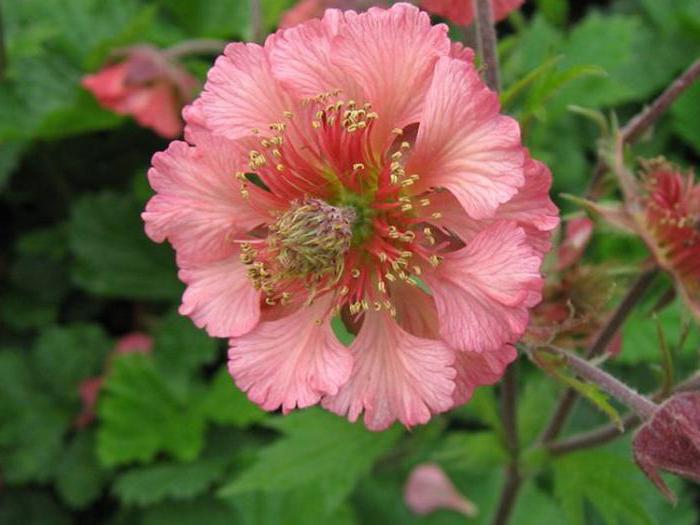

Landing
unpretentious to the ground
, therefore, it can be planted almost everywhere, except for acidic soils, which it does not tolerate and can wilt on them.
Also choose a well-lit place
, thanks to which the flower will be able to open normally, and the plant itself will not wither from a lack of sunlight.
does not tolerate low temperatures
so it is best to plant it in a greenhouse, where even in winter you can easily maintain a suitable temperature. Transplanting into soil is usually done after the appearance of 3 leaves on the sprout, this shows the readiness of the plant. If you transplant a flower earlier, it may not settle in a new place, not get used to the soil and die.
The soil on which the gravilat is planned to be planted must also be specially prepared. The soil needs to be fed by making it more saturated with organic matter and minerals. For this, compost is suitable, which is sold in any shop for the garden, or peat, which is more difficult to get, you can find it only in large centers specializing in the sale of products for plants. You can also use manure, but it must be diluted with water so that it is not dangerous to plants with its concentration of biologically active substances. After fertilization, the soil must be moistened with water.
Preparing for the winter period
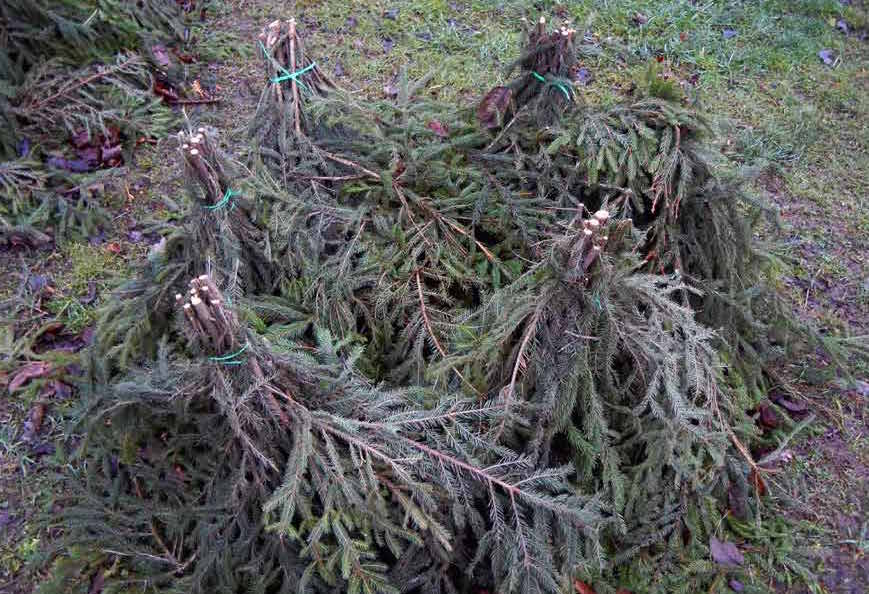

Despite the good frost resistance of the gravilat, it is better to cover it with special materials for the winter period. To do this, you can use agrofilm purchased at a hardware store or hardware store. It will not allow oxygen to linger inside the shelter, the plant will "breathe" freely through the warm shelter.
You can also use spruce branches. Spruce or pine branches will perfectly warm the plant and protect it from damage by the snow cover, as well as allow oxygen to freely penetrate into the shelter directly to the flower. The gardener decides for himself which option is most profitable and convenient in a particular case.
Care
Gravilat is an unpretentious plant that does not need constant care.
But it cannot be called eternal either, so every 3-4 years have to update the bushes
, in the presence of an already mature plant, this can be done by dividing the bushes.
The bush should be removed from the soil and then divided into several parts using a knife or pruner. Moreover, each part must have a piece from the root, several leaves and at least one bud. Further, several holes are created in the soil, fertilizers are introduced into them, in particular peat or compost. Then the soil is watered, and then it is allowed to dry out for several hours. Then pieces of the plant are laid in the holes and covered with earth, then the planting site should be watered.
It is advisable to plant plants at a distance. 20 cm apart
so that they do not interfere with neighbors and compete for water and nutrients. If the gravilat is planted in a flower bed, several leaves should be cut off from the plants, which prevents them from growing in height, so that they will not need a large amount of organic matter.
For good flower growth, organic fertilizers should be applied to the soil. This can be either compost or special mixtures sold in stores.
Gravilat does not need a lot of nutrients, so fertilizing will be enough 2-3 times a year
... This will prolong flowering for several weeks and the plant will look more presentable.
A large amount of water is not suitable for gravilat, and although watering is required, the planting site must be drained, otherwise the plant will begin to rot. Drainage is a good idea. It will also be useful to loosen the soil, which will supply the plant with a sufficient amount of oxygen, and remove weeds, which take away the substances necessary for the plant.
Features of growing on the site
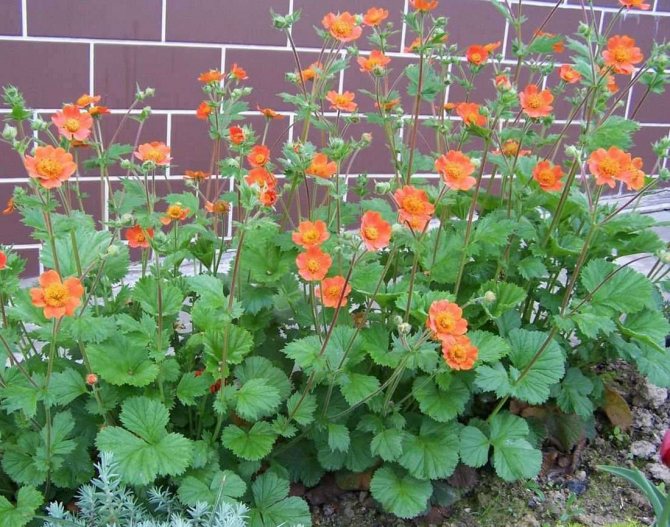

Any plant that is planned to be planted in your own summer cottage is worthy of competent selection of comfortable conditions. Outdoor gravilat is very unpretentious, but initially you need to provide it with a cozy place so that its beauty is revealed in full force.
To do this, you need to pay special attention to:
- selection of a growing area;
- soil preparation;
- to study the features of planting in open ground;
- consider watering rules;
- find out the need for fertilization.
Having studied all the main aspects of the growth of an ornamental plant, you can get a beautiful decoration of a plot or flower bed. It will retain its color for a long time and become a bright, spectacular specimen in the garden.Compliance with the basic rules of care and selection of the right place guarantees a long flowering period of the gravilate, the resistance of the variety to natural anomalies, as well as an active set of green mass.
Selection of a growing site
In order for the plant to feel as comfortable as possible on the site, it is necessary to choose a place open to the sun with well-moistened soil. It is not allowed to plant a plant in the ground where tall plants have already been planted, blocking the flow of ultraviolet radiation.
Soil preparation
The plant does not require a special soil composition, although attention should be paid to the acidity of the soil. If the indicators are exceeded, such land will not be suitable for planting. Also, if the soil is too waterlogged, it is better to think about planting a tame gravilat. This type of herbaceous plant is perfect for such a habitat.
Provided that it is planned to plant other plant species, for example, the Chilean gravilat, it is necessary to ensure drainage by adding a sand mixture to the soil, and also raise the beds above the ground. Chopped wood ash will help reduce acidity. It should be remembered that the soil must be well drained.
Compliance with the conditions of disembarkation
Plants can be planted with seedlings or seeds. In the ground, as a rule, already sprouted shoots are planted. This should be done at a distance of 15 - 20 cm from each other, so that later, with active growth, they do not interfere with each other.
The root system should not be too close to groundwater. Otherwise, the herb may rot. In this case, you can not wait for a beautiful flower bed. Sand and ash additives can lift the flower off the ground. You can also add a layer of fertile soil.
Watering rules
Gravilat needs to ensure regular and sufficient watering. The plant is very hygrophilous, but it also does not like an excess of water. It is important to maintain a balance and not forget about loosening the soil so that oxygen flows to the root system.
When planting a herb for the first time, it is best to choose a day immediately after a heavy rain. Then the dug hole for planting sprouts will not need to be watered with specially settled water. If the days are dry, before planting, you will have to spill the hole well with water so that the plant is as comfortable as possible.
After flowering, old peduncles do not fall, remaining on the stem. To make life easier for a flower, it is better to cut off dried flowers with scissors. Thus, the grower gives the plant freedom from wilted parts for the further development of the green mass.
The need for fertilization
Flowering grass does not require much maintenance, but experts recommend fertilizing flowers about 2 to 4 times during the entire flowering period in the summer months. This can be done with a universal potassium-phosphorus mixture or organic fertilizers, for example, manure or humus. This should be done within the first two weeks after planting, as soon as the plant takes root in the soil in an open area. In this case, the gravilat will quickly gain green mass and begin to bloom as early as possible.
In general, gravilat takes root well in almost any type of soil and does not require additional care from the gardener. It is only important to follow the planting rules and take into account the features of the selected plant variety.
Use in landscape design
Gravilat is often used as a decorative element in summer cottages. It is not picky about care and is bright enough to be noticeable.
Mixborder: ‘Mrs Bradshaw’ gravilat, ‘Crimson Star’ aquilegia, Yucca gloriosa, Cornflower and Quinoa
It retains its color throughout the year, and stands out in the winter under the snow, which is not typical for most flowering plants. That is why gravilat is so loved by gardeners all over the world. Often it is also planted in flower beds, since the overall brightness of the flowers creates a single picture that highlights a separate place.
The flower bed consists of gravilata, salvia, aquilegia, peonies.
It goes well with decorative bows such as allium.
Another option for combining gravilat and alliums
Gravilat and alliums
Its natural, slightly wild beauty looks good next to a stone, framed by paths, with ornamental grasses.
Gravilat in a mixborder along the track
Sometimes gravilat is planted in whole beds, giving the impression that the whole bed blooms with the same color, although the flowers have different shades.
Border from different gravillates
The origin and description of the flower, photo
Representative of the Rosaceae family has flowers that look very similar to roses or rose hips. Plant height reaches 70 cm. The leaves are light green, green, sometimes dark green, large at the root and small at the inflorescences. The leaves of the flower are resistant to frost and cold, they can retain their green appearance even under snow if the temperature does not drop below 18 ° C. The color depends on the type and variety: white, red, yellow, pink, orange, coral, etc. Stems are green with a burgundy coating, branched.
The perianth is claret or brown. The inflorescences are collected in umbrellas or panicles, which have from three to seven buds. There are varieties whose flowers resemble a bell. The seed is in a nut-shaped capsule and has an oblong shape.
There are more than 45-50 species and varieties, but not all of them are cultivated and grown for ornamental purposes.
Botanical description and varieties
Gravilat is an ornamental perennial with straight stems of rich green color, up to 70 cm long. The stems are covered with patterned leaves, which are collected in a basal rosette. On top of the leaves is a flowering stem, on which there are orange, scarlet or yellow flowers of rather large sizes.
From a distance, this perennial is very similar to the oriental poppy, since the gravilat is just as rich and colorful. Due to its undemanding agricultural technology, as well as because of its decorative features, this plant is very fond of.
Today there are about 50 varieties of this ornamental plant, the most famous of which are:
- Chilean gravilat. The plant is quite tall, it can grow up to 60 cm. The leaf rosette is rather large. From it in the spring, a peduncle is formed, which is presented in the form of cup-shaped small flowers. They are both simple and terry, the color is either yellow or red. The flowering period is usually quite long. The most common varieties of this subspecies are Fireball and Aurelia. Mai Tai gravilat is also popular.
- Mr. bright red. This is a winter-hardy plant species. In height it can reach up to 50 cm. The stems are slightly pubescent, and the flowers are very bright in color. Flowers are collected in small inflorescences. The abundant flowering period begins in the first week of June. The most popular and widely known variety of this species is Red Dragon, which is known for its double flowers.
- Mr. hybrid. This includes varieties that have been obtained through the selection of different varieties. There are many original varieties, the most famous of which are Double Sunrise (terry) and Tinker Bell.
A characteristic feature of this perennial is the presence of a dark red creeping root.
Any gardener who has become acquainted with such an ornamental plant appreciates its features and, over time, sets the goal of growing gravilat from seeds in his garden plot.
Did you know?
The plant is widely used in medicine for the preparation of various kinds of medicines. Such drugs help to normalize the menstrual cycle, speed up the healing process, and are also able to fight flatulence and cough.
What colors to plant gravilat with Beautiful combinations and popular companions
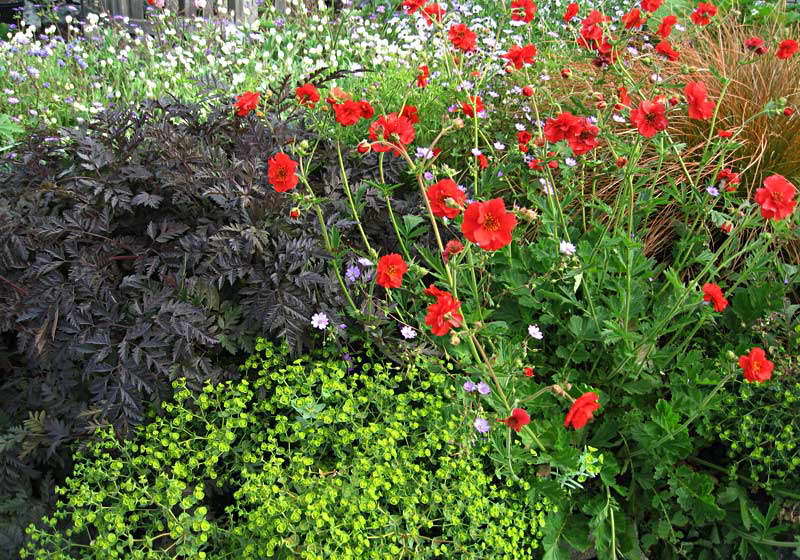

Gravilat in landscape design Beautiful combinations with flowers photo
Gravilat goes well with irises, lupine, forget-me-nots, nemophila, cereals, tiarella, peonies, phlox, goldenrod, buzulnik, bells, eschsholzia, herbal cloves.


Gravilat photo in a flowerbed with other flowers
The chaotic planting of these plants looks beautiful against the background of decorative stones. You can plant next to low ground cover, for example periwinkle or tenacious, Arabis, Bidense.
How to feed properly?
For abundant flowering, plants need more than water. In the most fertile soil, nitrogen compounds are most often present in large quantities. This substance is very important for the growth of green mass, but phosphorus and potassium are needed for the formation of buds.
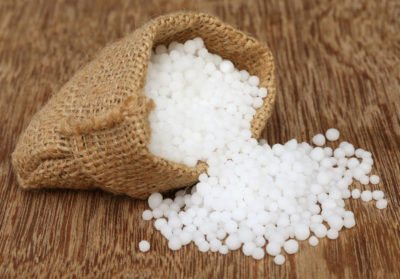

To obtain a large number of large bright flowers, gravilat must be fed with a fertilizer solution containing potassium and phosphorus compounds before flowering. It can be a ready-made mixture for flowering plants or a mineral complex fertilizer (nitrophoska, Kemira or other brands). They must be entered in accordance with the instructions on the package.
At home, a large amount of potassium and phosphorus can be provided by watering the plant with an infusion of wood ash: place it in a 3-liter jar, filling the container halfway, add water to the neck. Insist for 3 days, then strain and mix the liquid with 10 liters of water. Such feeding is also carried out before flowering, after the plant wakes up from the winter dormant period.
After the culture has faded, the feeding must be repeated to ensure that the flower buds are laid for the next season. When using complex fertilizers containing nitrogen, potassium and phosphorus, organic matter should not be introduced in the form of compost, humus, etc. Only if an infusion of wood ash, which does not contain nitrogen, is used for feeding, well-rotted compost or humus is introduced with incorporation into the soil in autumn.
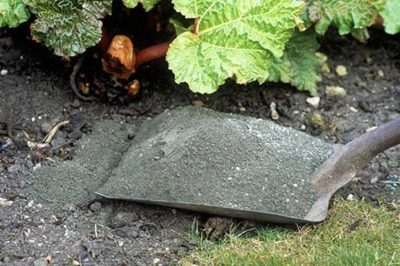

[collapse]
How to propagate gravilat by dividing a bush
Reproduction of gravilat is carried out using vegetative division of the parent large bush. The procedure itself is performed 3-4 times a year. It is necessary to carefully separate the daughter shoots along with parts of the root system from the mother bush. This procedure should be done in early spring or in autumn, at the end of flowering. Cuttings will take root very well if they are planted at a distance of 20-25 cm from each other.
You also need to fertilize the soil and water the site in a timely manner. There is no need to introduce any additional measures for the rooting of the plant.
Welcome friends on the site advice to gardeners. Perennial herb gravilat Chilean (Geum Chiloense) is a modest and unpretentious of graceful rosaceous inhabitants of flower beds, rabatok, alpine hills, shores of garden ponds.
Types of gravilat with description and photo
Hybrid gravilat Geum x hybridum
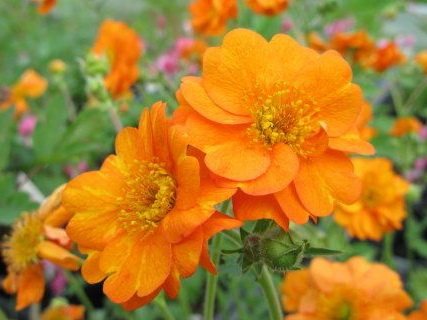

Gravilat hybrid grade Geum x Princes Juliana
Favorite by gardeners, the hybrid gravilat has absorbed the best features of its parents, wild forms: Chilean and bright red. Lush double flowers, powerful beautiful stems will be a great decoration for any corner of the garden, flower bed or pond.
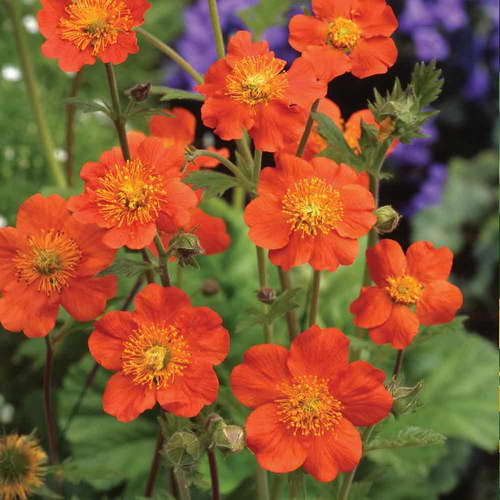

Gravilat terry variety Geum Queen of Orange photo
Popular varieties:
- ‘Fire Opal’ - orange-red double flowers;
- ‘Princess Juliana’ - orange-yellow inflorescences;
- 'Gladis Perry' - scarlet flowers.
Gravilat mountain Geum montanum
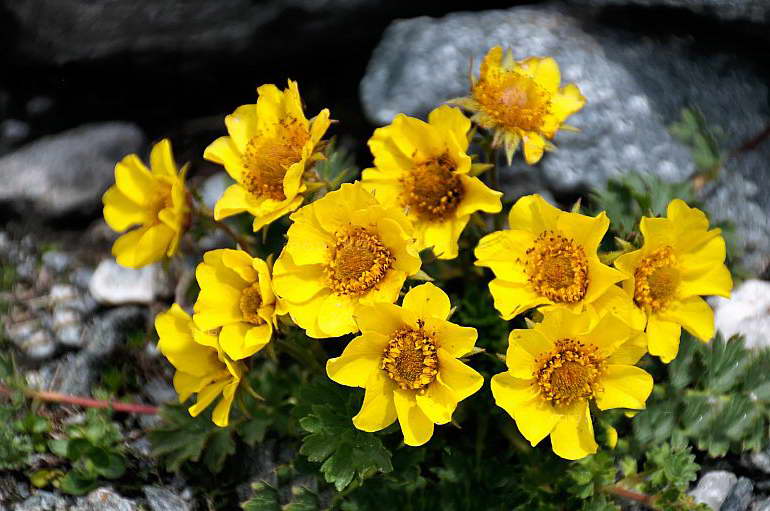

Gravilat mountain Geum montanum photo
Widespread in the mountains of Europe. A short perennial reaches a maximum of 30 cm in height. Small flowers up to 2.5 cm are cupped, yellow. Withstands severe frosts, prefers sunny areas.
River gravilat or tame Geum rivale
River Gravilat Geum rivale Flames of Passion photo
River gravity grows near rivers and reservoirs almost everywhere: in the European part of Russia, Asia Minor, in the Caucasus, in Western and Eastern Siberia.The plant reaches a height of about 70 cm, and over many years of life it grows a powerful rhizome. Stems are erect, dark red. Flowering occurs in the month of May, the flowers are small, inconspicuous, pale pink. This is a good honey plant, loved by bees for the abundance of sweet nectar. Reproduction takes place exclusively by seed.
Achene fruits have tenacious hooks, thanks to which they cling to animal hair and spread far from mother plants. Seeds germinate next spring. In the first year, the bush is very small, only a few leaves at the root rosette. The first leaves die off by autumn, being replaced by rounded leaves that hibernate until spring under the snow. And only after a year the plant begins to bloom.
Due to its rustic appearance, a plant is rarely planted in gardens, only two varieties are preferred:
- Lionel Sokh - yellow flowers.
- Album - white flowers
Gravilat Ross Geum rossii
Gravilat Ross Geum rossii photo
It was brought to Europe from North America, where it grows widely in the Arctic tundra, as well as on rocky areas, meadows. The perennial forms a continuous dense carpet 30 cm high, covering the glades with bright yellow clouds of flowers during flowering. Blooms in summer. Prefers soil without stagnant water, has high winter hardiness.
Gravilat three-flowered Geum triflorum
Gravilat three-flowered Geum triflorum photo
Gravilatum triflorum originated from humid, damp places along rivers in the vastness of North America. Only 30 cm tall, very hardy and winter-hardy. It blooms with either yellow-scarlet or lemon-purple flowers.
Gravilat Chilean Geum quellyon
Chilean gravilat in landscape design photo of an alpine slide
As the name suggests, it was brought from Chile, South America. Plant height is decent, up to 60 cm. Leaves are collected in a basal rosette. It begins to bloom in June and pleases with flowers for about 50 days.
Terry gravilata varieties are especially loved by flower growers:
- Lady Shtrateden - yellow flowers;
- Mr. J. Bradishaw '- 60 cm tall, orange-colored double flowers, blooms in July, continues to bloom for about 30 days.
- Fireball - only half a meter high, luxurious lush flowers of bright orange color, flowering lasts 50 days.
- Goldball - yellow flowers.
Gravilat bright red or red-flowered Geum coccineum
Gravilat terry bright red grade Geum ‘Mrs Bradshaw’ photo
Found in Asia Minor, in the Caucasus, in Greece. The perennial has pubescent stems topped with large bright red flowers. The leaves are tripartite.
A unique winter-hardy variety with long flowering from June to September is popular: the flower is called "Borizin".
Features of plant care and reproduction
Chilean gravilat takes root very well and does not require excessive care... The main thing is not to forget:
- Remove weeds.
- Loosen the soil to aerate the rhizome.
- Water regularly in the heat, under the root, drought negatively affects flowering.
- Avoid excessive moisture and moisture stagnation.
- Fertilize two or three times a season with mineral fertilizers (nitroammofoska is a great option). Then flowering will be longer.
- Cover the plant with foliage or mulch for the winter.
If you prune old shoots after the first flowering, then you can thus achieve an extension of this period, as well as a repeated flowering period at the end of summer.
You can propagate gravilat, seeds collected from fruits... And also by the method of dividing the bush. In this way, you can rejuvenate the bush, extending its stay in one place. The plant can be planted both in spring and in autumn.
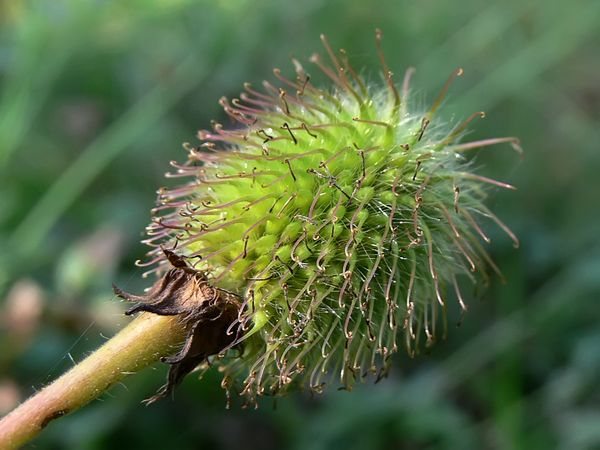

Box with seeds of Chilean gravilat
Landing nuances
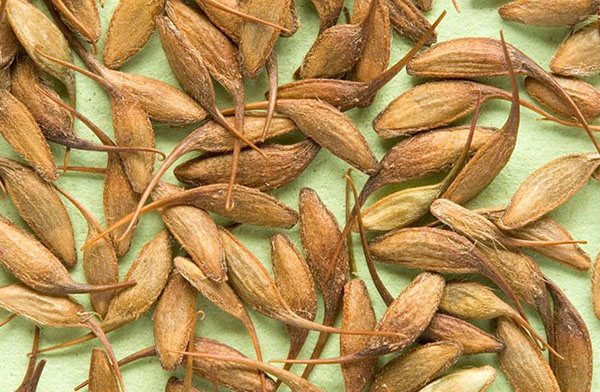

At the dacha, you should find a well-lit area that is warmed up by the sun for more than 8-10 hours a day. They are thermophilic crops and do not tolerate heavy shade.The main principles of planting a gravilat and caring for it include the following:
- Correctly selected soil. Damp areas must be dried using special methods. Some recommend making a mound garden or buying varieties that love moisture. In the hole, it is imperative to make drainage from stones or expanded clay. When digging up a plot, the earth should be mixed with sand.
- Distance between bushes. It should be between 15 and 20 cm for the leafy rosette to develop freely.
- Maximum remoteness of roots from groundwater. In overly moist soil, the root system begins to rot, and gray mold also appears.


Diseases and pests generally do not affect this member of the Pink family. Moreover, the bushes are very easy to propagate in your backyard. It is enough to sow seeds in a container in the spring (March), and in the last days of April, transplant seedlings into open ground. It should be borne in mind that the threat of frost still remains, so the sprouts need to be covered. For these purposes use
- agrofiber;
- film;
- plastic bottles.
However, the young will only throw out the color next year. The second breeding method is by dividing the bushes. In the spring or early fall, you need to dig up the bush and carefully divide it into two parts. Before planting in the hole, pour water to prevent the roots from wilting.
It is important to reduce the acidity of the soil if necessary. To do this, add several parts of wood ash to it.
How to care for a perennial
Despite the general non-capriciousness of the plant, it still has a number of requirements for self-care. We will provide basic information about this, thanks to which even a beginner in floriculture will be able to grow this beautiful perennial on his personal plot.
Watering and soil care
It should be noted that such a plant is capable of withstanding short-term droughts without prejudice to its development. But it responds very well to. In hot periods, it needs to be watered regularly and abundantly.
Naturally, in this case, you need to ensure that the water does not stagnate in the ground. Everything should be in moderation.
Important!
If the gravilat begins to dry out after the drought, and its ground part looks very damaged, there is no need to think that the plant cannot be saved. Abundant and regular watering can revive a perennial.
Fertilizer
The most suitable are those that include the NPK () complex. Granular dressings with elements of potassium and phosphorus are suitable. the plant is needed twice a season. Such manipulations will have a positive effect on its flowering.
Pruning
In general, the plant does not need. Such a procedure will be needed in cases where you need to rejuvenate a perennial a little or remove faded inflorescences. Pruning will have a positive effect on the emergence of new shoots and the flowering of the plant.
Gravilata grades: photo
Choosing a landing site
To grow healthy and pleasing to the eye, you need to choose the right place for planting it.
Lighting
To plant a plant, you need to choose well lit
exposed to the sun's rays. In the shade, the flower can also survive, but its growth will not occur very quickly.
The soil
When planting, it is better to give preference to non-oxidized ones. It is recommended to pre-fertilize the soil with a mixture of coarse sand and deciduous soil. Do not plant a flower in waterlogged soil.
- add some soil and raise the flower bed.
Application methods
From the grass, roots and rhizomes of river gravilate in folk medicine, decoctions, infusions and alcoholic tinctures are prepared, suitable for external and internal use.
Alcohol tincture
Dried roots (15 g) are poured with 100 ml of vodka and insisted in a dark place for 1 month. Take the prepared remedy before meals, 15 drops each, washed down with a small volume of boiled water. It is effective for stopping bleeding, relieving fever, treating nervous disorders, fatigue and chronic fatigue syndrome.
Decoction of roots and rhizomes
Dry crushed roots and rhizome of river gravilata are placed in a saucepan and 400 ml of boiling water is added to them. The composition is boiled for 10 minutes, after which it is infused for 1 hour and filtered. This remedy is used externally for rinsing the throat and mouth and baths for joint and muscle pain.
Herbal collection for gastritis
A mixture of medicinal herbs is prepared, including 4 parts of river gravilata herb, plantain leaves, burnet leaves, thyme herb, 3 parts of toadflax herb, willow tea, meadowsweet, lemon balm, coltsfoot and chamomile flowers, 2 parts of heather and hop cones. Pour 1 tbsp into a thermos. l. the resulting collection and pour 300 ml of boiling water, incubate for 6 hours, and then filtered. Use the product in 100 ml three times a day, half an hour before meals for one month. Then they take a 10-day break and repeat the course of treatment.
Rod Gravilath
In total, there are about fifty species of this exquisite flower on the globe. And only 20 varieties of gravilata are classified as herbaceous plants that are used for planting in open ground. Of these, only 7 can be found on the territory of Russia, which are adapted for growing in temperate and cold latitudes. The European climate is also suitable for some varieties of this genus.
Urban
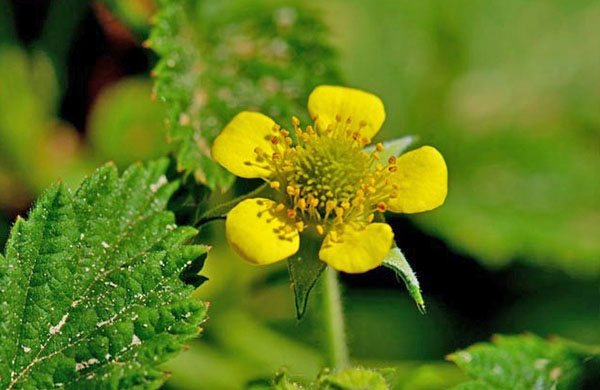

In many countries it is called St. Benedict's herb. The flowering period of the urban gravilat lasts about four months - from May to August. Miniature flowers, 2 cm in diameter, thanks to 5 bright yellow petals, resemble the sun. The double center is in the same shade, but in some specimens it has a brown edging made of small stamens. The entire stem is covered with delicate villi. The leaves are collected in a triple rosette, which is planted on long roots.
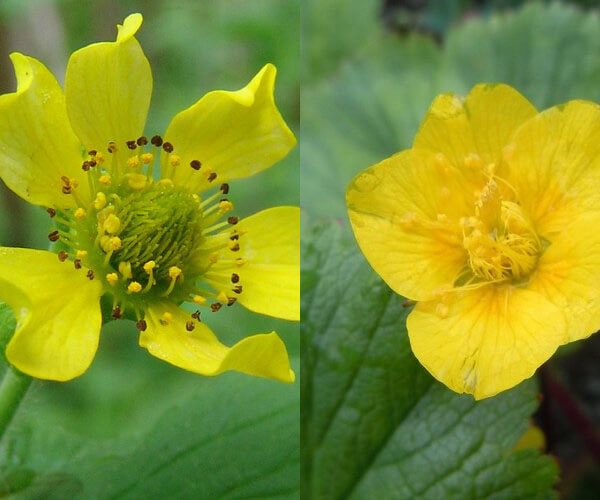

The height of a wild plant varies from 40 to 80 cm, which makes it possible to use urban gravilat to decorate rectangular flower beds. Here are the main points in growing:
- Frost and drought resistant.
- Do not tolerate too moist (waterlogged) soils with a high salt content.
- Planting is carried out by seeds in early spring.
- The width between the beds should be more than half a meter.
It has been scientifically proven that the roots of the plant have medicinal and antidote properties. Moreover, many housewives add it as a spice to soups and alcoholic beverages (wine or ale).
You should not bury the seeds deeply in the ground, it is enough to deepen them by 1.5-2 cm. Then the seedlings will appear earlier, after 2-3 weeks.
River
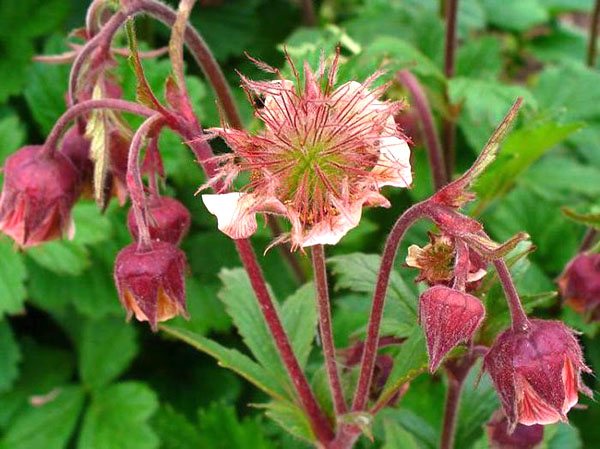

Unlike most of its "relatives", the river gravilat gets along well in humid and slightly shaded areas. These can mainly be:
- damp banks of ponds, swamps and rivers;
- clay, sandy or silty soils;
- fields or meadows with nutritious soil;
- shrubs and forests.
Meet the most famous types of cyclamen
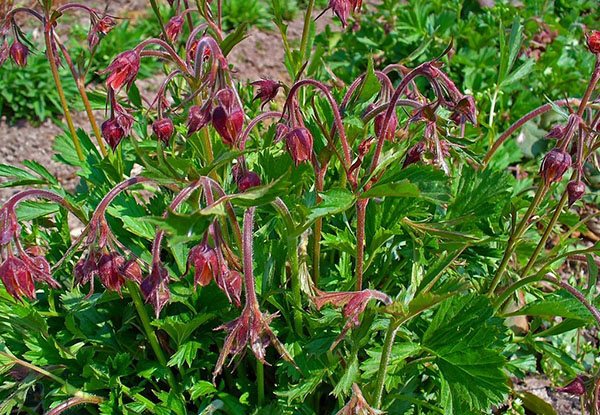

In most cases, it withstands acidic as well as limestone areas. It is one of the few varieties that adapts perfectly in the most adverse conditions. Starting from the May holidays and ending with September weekdays, purple avens (as Americans call it) pleases gardeners with its carmine red bloom.
Leaves in neutral and slightly acidic soils begin to change their color. Purple streaks protrude on them. This can be used when creating an original landscape design.
Such herbaceous plants for open ground grow up to one meter, while the river gravilat is able to independently fertilize the soil around itself. Ripe stamens serve as a kind of organic food for him.
Medical and culinary applications
In medicine and cooking, rhizomes, leaves and flowers of city and river gravilata are used.Roots are mainly used as a medicine in homeopathy and folk medicine: their decoction helps with colds, gastrointestinal, nervous diseases, migraines, rheumatism, profuse uterine and hemorrhoidal bleeding, weak gums, malaria. Gravilat has a disinfectant, choleretic, expectorant, hypnotic, antiemetic, astringent, analgesic, restorative effect. Gravilat is classified as a herbal aphrodisiac that enhances sexual potency. Also gravilat helps to prevent prostate adenoma. Treatment with gravilat is not recommended for increased blood clotting. The leaves and roots of the city and river gravilata are edible. Greens (young shoots and leaves) and gravilata root are used as spices. Gravilata rhizomes have a subtle clove scent. Gravilat greens are put into vegetable and meat salads, soups (cabbage soup, borscht, cold soups) and mashed potatoes. Fresh and dried roots of gravilata are added to soups, vegetable and apple fillings for pies, as well as to a variety of drinks: kvass, mash, home beer, liqueurs, white grape wine, vermouth. Also, the roots of gravilat are used for the preparation of confectionery. Gravilat is combined with sorrel, onions, dill, parsley, black pepper, zest. Dry roots of gravilat for
Partners
Benedict grass is a natural insecticide and honey plant, therefore it is often planted by gardeners in vegetable beds. The gravilat itself prefers various bulbous flowers as neighbors. When planting together, it is necessary to take into account the growth of adult plants and the flowering period.
Gravilat or "Greek rose" - a beautiful unpretentious perennial, will be a wonderful decoration for a rock garden or a harmonious addition to flower beds. If it is important that there is a lot of flowering vegetation on the flower beds, gravilata varieties with a long flowering period are chosen.
Landing of the gravilat
For planting a perennial, you need to choose sunny places with well-drained, low-acid soil. When preparing the soil for planting this perennial, it is recommended to dig up the ground by adding sand (to ensure drainage) and wood ash (to reduce acidity). If the soil is waterlogged, you can plant a river gravity in it or carry out drainage work and slightly raise the beds. It is recommended to plant a gravilat at a distance of 15-20 cm between a bush and a bush.
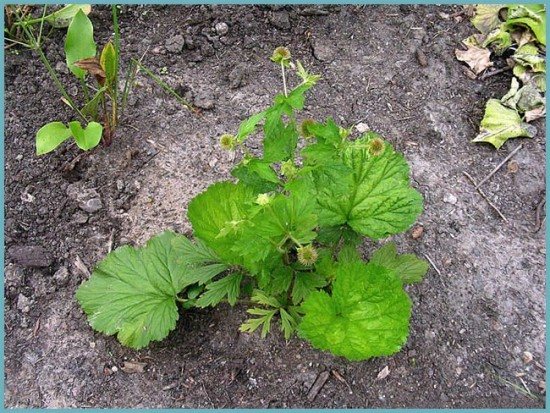

How to plant a Chilean gravilat?
Planting a plant should be done in the spring. Despite the fact that the flower does not belong to whimsical crops, it is recommended to loosen the soil a little beforehand
... It is imperative to add or. If there is only elevated land for landing, it is worth adding a little to it. When planting a crop, adhere to the recommended distance between bushes - at least 20 cm.
Did you know?
If you add a tincture of orange peel and gravilat rhizomes to light low-alcohol drinks, they will acquire the taste of vermouth.
Planting a flower we recommend using some tips:
- An excellent option when disembarking is the use of low, long ridges. They will harmoniously fit into the framing of the paths.
- Another good solution is. They are necessary for the collection of plants that bloom constantly. By planting a gravilat with other flowers, you can create a beautiful composition.
The flower can be used to create a carpet lawn. Due to the fact that such areas are more often in the shade, the bush will bloom less often, but it will delight you with beautiful greenery.
Chemical composition
For the preparation of medicines in folk medicine, the aboveground and underground parts of the plant are used. The roots and rhizome contain:
- tannins (up to 25%);
- flavonoids;
- organic acids;
- glycoside gein;
- alkaloids;
- essential oil (up to 0.1%);
- bitterness;
- resin;
- carbohydrates.
The aerial parts of the plant contain vitamin C, provitamin A, tannins. The seeds are rich in fatty oil.
Interesting: In the roots of the river gravilat there is a red dye, therefore, they are sometimes used to obtain red-brown dye and tanning sheepskin coats.
Where does gravilat grow
Growing this flower is not a laborious process. This ornamental plant is very unpretentious.
It is best to plant in early spring, after the soil has thawed, but before the buds begin to bloom.
Lighting
When choosing a place for planting such a flower, it is very important to pay attention to the degree of illumination of the site. For this perennial, an open and sunny area is best suited. Planting is also allowed in slightly shaded areas.
The soil
If we talk about the soil, then it is important to know that almost all types of gravilat do not tolerate stagnation of moisture in the soil. Due to high humidity, the root system of the flower may begin to rot. Areas where groundwater is close to the surface are not suitable for growing gravilat there.
If there are no other options, you can plant the plant either on a high one, or add more sand to the soil, thus raising a little. Despite the general unpretentiousness of this perennial, it is desirable to provide the soil loose, permeable and light. The flower does not like acidified soil.
Did you know?
Gravilata rhizomes are used as spices. Seasonings for meat, fish and vegetable dishes are made from it. Also, this seasoning is brewed following the example of tea. Rhizome is often added to beer, kvass and other drinks. Infusions of orange peel and gravilata rhizomes can give the wine a taste of vermouth.
Basic rules for planting flowers
The decorative perennial is planted in open ground in the spring. For these purposes use seedlings that are grown from seeds.
Observing simple rules, you can grow beautiful flowers on the site:
- Sowing seeds to produce in boxes with nutrient substrate, to a depth of 2-2.5 cm, in March - April.
- Cover with glass or foil on top to create a greenhouse effect.
- After two weeks, the seeds will sprout. The film needs to be removed.
- When three leaves appear, plant seedlings in the ground, not earlier than May.
- To choose sunny places or light partial shade... Avoid waterlogged areas.
- Maintain a distance when planting in the ground, as the plant needs room to grow.
With this growing method, flowering occurs in the second year.
You can plant seedlings that are obtained by dividing the bush... For this, plants that are at least two years old are dug up and carefully divided into parts.
With this method, flowers appear in the same year, at the end of summer.
When planting in open ground, it is worth taking into account:
- Drainage - a necessary condition for growing gravilat, since it does not tolerate stagnant moisture.
- The soil should be loose, moisture permeable well.
- A mixture of sand and soil will ensure the normal growth of the flower.
- Acidic soils unsuitable for this plant.
- Before planting, you need to fertilize the area. For this, the mineral complex N-P-K is suitable, organic fertilizer - humus or manure, well diluted with water.
- In each hole, before planting, put a little peat.
Instilled in reproduction
If you decide to plant Chilean gravilat on the site, you can choose one of two methods: growing from seeds or dividing the bush. Let's consider each of them.
Seeds
Before planting seeds, previously and soaked in water
... Thanks to these measures, you can significantly increase the germination of seed. Seedlings are covered with help, thus protecting them from frost.
Avens
(from Lat.Geum) -
plant
short stature, but with a well-branched rhizome. Gravilat is often used to create alpine slides.Due to the fact that the root holds the soil well, the rock garden turns out to be compact.
Description and features of gravilat
Gravilat is a perennial from the "pink" family, it grows all over the planet, with the only exception being Antarctica. It has many different names, each nation has its own.
The first mention is found in Greek medical books, where the beneficial properties are described. gravilata root
, stems and rhizome has a light clove aroma. That is why it was used to flavor many tinctures and medicines.
Gravilat is considered to be meadow, less often it can be found in forest thickets. The stem is small, erect. At the base, a rosette with larger leaves is developed (feathery-lobed, feathery-dissected), at the top, the leaves are smaller, resembling three cut lobes in shape. The uppermost leaves are small, whole.
Inflorescences gravilata of perennial
there are paniculate and umbellate. collected in brushes of 3-5 pieces, the color is yellow, white and pink. The open flowers look upward, resembling bells.
Pollination takes place with the help of insects. Flowering occurs in May / June. The fruit is concentrated in a multi-root with a large number of seeds. Seeds are slightly elongated, with tails or curved ends. After ripening, they crumble easily.
In nature, there are more than 50 types of gravilata, about 20 varieties have been cultivated by humans. The plant is distributed on all continents in the temperate zones. The steppe zone is the abode of the gravilata, it can be found in forest plantations or on the outskirts of mixed forests.
Planting and reproduction of the gravilat
Avens
- the plant is not particularly demanding, both in planting and in
leaving
... The only caveat is that it does not tolerate highly acidified soil and swampy places. Since it concentrates its power more at the root, then loose, light soil is important for it.
The main methods of planting: dividing the bush, from seeds and seedlings. They are planted in early spring in soil with normal acidity and rather loose, but not very waterlogged.
Usually, compost and a mixture of peat and foliage are added to improve soil performance. The acidity is "leveled" with lime or. For better looseness, a mixture of ash and sand is used.
Seed material is soaked in warm water for several days before planting. Then it is well dried with a napkin and sown in the ground. Soil temperature should be at least +1 ° С. Seed gravilat
sprouts after 20-30 days.
They resort to dividing the bush when the intensive vegetation has passed, it has a fully developed root system and it is strong enough. Usually, part of the bush is separated in late summer or early autumn.
The separated element is planted in loose, well-moistened soil. Gravilat must start and start young shoots. The next year, the young will grow from the root again.
Landing seedlings of gravilata
carried out in early summer. In loose soil, holes with a diameter of 5-10 cm are made and young are planted, while the soil is well watered. If you plant hybrid gravilata varieties, then you need to take care of drainage.
Breeding varieties are highly susceptible to fungal diseases, stagnation of moisture in the root zone is contraindicated for them. You can treat the soil with a fungicide before planting to kill the fungus.
Gravilat care
For landing gravilat
choose well-lit areas, but it also tolerates partial shade. In order for the flowers to be painted in bright colors, it is advisable that there is a lot of light.
Loosening of the soil and removal of weeds are regularly carried out. The latter often become carriers of rot. It usually blooms in May / June, but there are varieties that bloom all summer.
It is important not to miss the ripening of the seeds, they crumble very quickly. Therefore, for the selection of high-quality seed material, the fruitlets are tied with cloth.
Watering is done moderately, at the root. In hot weather, you can water once a day (in the evening).After heavy rains or on cloudy days, watering is carried out when the soil is very dry.
A complex set of fertilizers is suitable for feeding; it is applied twice during the growing season. Hybrid terry
varieties
gravilata
very sensitive to severe frosts. Therefore, for the winter period, they are covered with polyethylene.
If the gravilat is planted in a rock garden, then it is important to cut it off in time. This is done to form the aesthetic appearance of the bush and in general. An adult plant does not tolerate transplanting well, this is due to a highly branched root system. It is better to immediately find a permanent place for him.
Gravilat has virtually no natural pests due to its specific scent and essential oils. But the stems and root often infect fungal diseases.
Prevention includes: soil treatment with fungicide mixtures; selection of high-quality seed; spraying seeds before planting with antifungal agents.
Types of gravilat
In nature flower gravilata
has only the usual shape and three colors, but the breeders have bred varieties with double petals and a wider range of shades.
* Chilean gravilat
- one of the tallest members of the family. Perennial, reaches a height of 60-70 cm. It has a long flowering period (over two summer months). painted in purple, terry inside.
* Gravilat "triflorum"
... Relatively short perennial (up to 30 cm tall). An excellent copy for creating flower beds and rock garden. It is valued for its bright yellow shade of flowers, sometimes there are specimens: orange petals with red stripes. IN
growing gravilat
, like its relatives, is not whimsical, the only condition is high-quality drainage.
* Gravilat "river
»(Tame) - perennial, habitat in Eurasia and North America, reaches a height of 25-80 cm. Acquire a pale yellow color with a red stripe. It grows in moist, mildly acidic soils.
The variety acquired a conservation status in Russia (Irkutsk and Saratov regions) and in Ukraine (Kharkov region). The roots contain up to 23% tannins, a large amount of acids, alkaloids and essential oils.
* Gravilat "urban"
- perennial, reaching a height of 30-60 cm. Grows on almost all continents. The rhizome contains 40% tannins, tinctures from the root have anti-inflammatory, wound healing, astringent, diaphoretic and restorative effects.
* Gravilat "red dragon"
"- a miracle of breeding efforts. The plant was created specifically for obtaining large terry. Deserves attention, thanks to the brightness of colors, unpretentious care and a long period of flowering. Use
red gravilat
for decorative design of flower beds, alpine slides, for creating flower arrangements.
* Gravilat "rigletto
»- perennial, reaching a height of 40-60 cm. It has a panicle inflorescence with double flowers of a bright red hue (4 cm in diameter). Great for planting in well-lit areas, when decorating coastal flower beds. Demanding on drainage soil, blooms in the second year after planting.
* Gravilat "fireball
"- perennial cold-resistant, reaching a height of 30-60 cm. Differs in large flowers (diameter 4-5 cm) and the same large petals. Has a bright, almost magenta color tint. Suitable for planting in open areas and in partial shade. Once every three years, the rhizome of the plant must be updated. Differs in long flowering (over two summer months).
On the photo gravilat
always pleases with large, bright colors. This plant takes pride of place in compositions, it is used to create artificial natural parks and flower beds. Gravilat is not only useful, but also quite beautiful, thanks to the variety of colors of the petals.
Gravilata flowers, especially double varieties, attract special attention and go well with other garden crops - carnations, primroses, bells.This plant does not require careful attention, however, depending on the variety (and there are more than two dozen of them), you need to care for the gravilat in different ways. In this article, we'll look at growing and caring for three of the most popular gravilata varieties.

